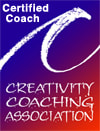Dualistic Forces and Counseling for Creative PeopleHi, Creatives! This month’s blog post is about a concept introduced to me by Eric Maisel (and if you haven’t read anything by him, I highly recommend!) A concept that I am getting to know and experience more- and the more I do the more I grow clinically, personally and creatively- and so want to take the opportunity to introduce it to you: it is the concept of dualities in Counseling for Creative People. Dualities for Philosophy and Creativity CoachingDualities exist all around us in life. Opposite-end-of-the-spectrum forces that naturally oppose each other and create tension. Philosophers are no strangers to discussing them- Heraclitus’ theory was based on constant change between opposing forces as the source of all movement and natural existence. He said, “All things are in flux; the flux is subject to a unifying measure or rational principle. This principle (logos, the hidden harmony behind all change) bound opposites together in a unified tension, which is like that of a lyre, where a stable harmonious sound emerges from the tension of the opposing forces that arise from the bow bound together by the string.” The important concept for us as creative people and that we use in creativity coaching and creativity counseling is recognizing the value of dualistic forces in our own lives and embracing them fully: that neither part of these pairs of power is more valuable than the other Therapy for Creatives that Understands DualitiesIf you get thinking about it there is no end to the pairs of dualistic forces at work in our world, and really what we are doing is operationalizing concepts so we can talk about them (which is fine- it is what language is for!) But of course, as a creativity counselor, what I am interested in specifically are two categories of forces in your lives- creative dualistic pairs and psychological dualistic pairs. Some of the classic pairs in creativity are process vs product, technique vs idea, flow vs stuck or block etc. In psychology they can be emotional pairs like happiness and sadness, anxiety vs peace. Some even blur the categorical boundaries between psychological and creative pairs such as struggle vs success or perfection vs imperfection. Take a moment to consider what sorts of dualistic pairs have presented themselves in your creative and psychological lives. Dualistic Pairs Used in Therapy for CreativesWhile according to some theories, almost everything exists in tension and balance with its natural opposite, here are some examples of dualistic pairs we use in creative therapy: 1. Exploration and Exploitation: The balance between exploring new ideas and exploiting existing ones. 2. Freedom and Structure: Finding the equilibrium between creative freedom and the necessary structures or guidelines. 3. Inspiration and Discipline: Harnessing both the spontaneous bursts of inspiration and the disciplined effort required to bring ideas to fruition. 4. Emotion and Intellect: Integrating the emotional depth of creativity with the intellectual rigor needed for effective execution. 5. Risk and Safety: Navigating the tension between taking risks to innovate and seeking safety and security in familiar approaches. 6. Originality and Influence: Balancing the desire for originality with the inevitable influence of external sources and predecessors. 7. Solitude and Collaboration: Embracing the solitary moments of introspection alongside the collaborative synergy of working with others. 8. Reflection and Action: Engaging in thoughtful reflection to generate ideas and insights, while also taking decisive action to manifest those ideas. 9. Ambiguity and Clarity: Embracing the ambiguity inherent in creative processes while striving for clarity in communication and expression. 10. Self-Expression and Audience Reception: Balancing the desire for authentic self-expression with considerations of how one's work will be received and interpreted by others. 11. Process and Product: Managing the balance between the creative process itself and the end result or product that emerges from it. 12. Creativity and Technique: Integrating the imaginative aspects of creativity with the technical skills and craftsmanship required for execution. 13. Perfection vs Imperfection: Striking a balance between the pursuit of perfection and embracing the beauty of imperfection and flaws. 14. Expression vs Literalism: Navigating between expressing ideas in abstract or symbolic forms and conveying them in a literal or direct manner. 15. Flow vs Stagnation: Finding the rhythm of creative flow while avoiding stagnation or creative blockages. In coaching and therapy for creatives, I use these pairs often to illustrate the importance of the existence and importance of "and." That is to say- in these pairs, they represent a spectrum of conditions, and neither condition is more important than the other, but both are necessary for the existence of the other. In our creativity, it is important to spend time in each duality, and exploring the tension in between them, in order to grow. Dualistic Forces in Creative TherapyThe concept of dualities is pretty simple: both parts of a dualistic pair are equally important and powerful parts of your life story. In fact- in your life you will constantly experience and oscillate between these forces. To value one over the other is to deny important experiences and parts of self and life. As Heraclitus famously said, “It is in changing we find purpose.” And so, Creatives, it is with this topic today I propose to you recognizing areas of resistance in your life- places where we can learn to live our lives more fully and authentically, the way your creative soul was meant live. This is an important tool both in Creativity Coaching and Counseling for Creative People. Start Creativity Counseling and Creativity Coaching TodayIf you are interested in real, impactful and lasting life change for your creative mind, I would love to help you. Let's connect and launch your life to the next level! Choose a step, right now from my site if you are ready to take action and move forward in your life: 1) Book a Free Consultation. All new clients to Creatively, LLC are entitled to a 15 min, free consultation to sit with me and discuss your needs, services available, and we can problem solve and hand-pick best next steps to help you succeed. 2) Book a Coaching Package. Are you a working Creative in need of specific support? I offer a range of Coaching Packages- let's get started with one that is right for you. More Articles Like This for Creative PeopleCreative Hierarchy of Needs, Psychology of Creativity, Crisis of Meaning, Coaching Creative People, Mental Health and Creativity, Creative People, Creative Personality and Anxiety, Make Time for Art, A Creative Personality Snapshot, Therapy for Creatives: Creating Holistically, Therapy Skills for Creatives: Reducing Anxiety, Your Creative Life Purpose, 3 Steps for Creatives During a Crisis
(C) 2024 Creatively, LLC www.creativelyllc.com Self Esteem for Artists, from a Therapist for ArtistsIn a world where self-esteem can often feel fragile and elusive, creativity stands as a powerful ally. The interplay between creativity and self-esteem is rich and multifaceted, offering individuals a pathway to self-discovery, resilience, and personal growth. In this article, we'll explore how embracing creativity can positively impact self-esteem and provide practical strategies for nurturing both. The Connection Between Creativity and Self-EsteemCreativity is a fundamental aspect of human expression, encompassing a wide range of activities from art and music to problem-solving and innovation. At its core, creativity involves tapping into our imagination, intuition, and unique perspectives to generate original ideas and solutions. When individuals engage in creative pursuits, they often experience a sense of flow—a state of deep absorption and focused attention where time seems to stand still. This immersion in the creative process fosters a sense of competence and mastery, leading to feelings of accomplishment and pride. Moreover, creative expression allows individuals to connect with their inner selves, expressing thoughts, emotions, and experiences that may be difficult to articulate verbally. This process of self-expression can promote self-awareness, self-acceptance, and authenticity, laying the foundation for healthy self-esteem. Exploring the Interplay between Authenticity, Creativity, and Self-EsteemAuthenticity, creativity, and self-esteem are interconnected elements that shape our sense of identity, expression, and well-being. Understanding the relationship between these aspects illuminates how embracing authenticity can fuel creativity and bolster self-esteem, fostering a more fulfilling and empowered life. Authenticity: Embracing the True Self, and Person Centered TherapyAuthenticity involves living in alignment with one's genuine thoughts, feelings, and values, rather than conforming to external expectations or societal norms. It requires self-awareness, self-acceptance, and the courage to express oneself authentically in various aspects of life. This is a pillar of Person-Centered Therapies. When individuals embrace authenticity, they cultivate a deeper connection with their true selves, fostering a sense of inner wholeness and integrity. This authenticity serves as a fertile ground for creativity to flourish. Creativity: Unleashing the Power of Imagination
Authenticity fuels Self Esteem in Creative People by:1. Inspiring Originality: Authenticity encourages individuals to express their true selves, leading to more original and innovative ideas and creations. When people feel free to be themselves, they are more likely to explore unconventional paths and push creative boundaries, and live lifestyles aligned to their own wants and needs, building up their sense of self. 2. Enhancing Emotional Resonance: Authenticity imbues creative lives with genuine emotion and depth, making experiences more mindful and impactful for Creative People. Authentic experiences and emotions resonate on a deeper level, fostering connection and empathy to the world around you. This increases meaningfulness in day-to-day experiences, building self esteem. 3. Fostering Courage and Resilience: Authenticity cultivates the courage to take creative risks and overcome obstacles in the creative process. When individuals embrace their authentic voice, they develop resilience in the face of criticism or setbacks, allowing them to persevere and continue creating, and develop strength in their identity and worth. 4. Authenticity and Self-Acceptance: Embracing authenticity fosters self-acceptance and self-love by honoring one's true nature and inherent worth. When individuals embrace their authentic selves, they cultivate a positive self-image and greater self-esteem. 5. Creativity and Self-Expression: Creativity provides a channel for self-expression and self-discovery, allowing individuals to explore their interests, talents, and passions. Engaging in creative pursuits boosts self-esteem by affirming individuals' abilities and accomplishments. 6. Feedback and Validation: Authenticity and creativity empower individuals to seek validation from within rather than relying solely on external feedback. When individuals derive satisfaction from expressing their authentic selves and engaging in creative endeavors, they build intrinsic self-worth that transcends external validation. Self-Esteem: Nurturing Confidence and WorthSelf-esteem is the subjective evaluation of one's worth, competence, and value as a person. It reflects individuals' beliefs about themselves and influences their thoughts, emotions, and behaviors. Cultivating Authenticity, Creativity, and Self-EsteemTo nurture authenticity, creativity, and self-esteem, individuals can: 1. Explore Diverse Forms of Creativity: Encourage exploration and experimentation with various creative outlets, such as painting, writing, dancing, cooking, or gardening. Embrace the process without worrying about the end result, allowing creativity to flow freely without judgment. 2. Embrace Imperfection: Shift the focus from perfection to experimentation and playfulness. Embrace mistakes as valuable learning opportunities and celebrate the unique qualities that make each creative endeavor distinctively yours. 3. Set Realistic Goals: Establish achievable goals that challenge and inspire you without setting unrealistic standards. Break larger projects into smaller, manageable tasks, celebrating progress along the way and acknowledging your efforts and accomplishments. 4. Practice Mindfulness: Cultivate mindfulness through meditation, deep breathing, or mindful movement practices. By staying present in the moment, you can fully engage with the creative process, letting go of worries about the past or future and fostering a deeper connection with your creative instincts. 5. Seek Inspiration:Surround yourself with sources of inspiration, whether it's nature, art, literature, or conversations with fellow creatives. Draw inspiration from diverse sources and allow yourself to be influenced by different perspectives and ideas. 6. Celebrate Self-Expression: Recognize the value of self-expression as a powerful tool for cultivating self-esteem. Share your creative work with others, whether it's through exhibitions, performances, or simply sharing with friends and family. Embrace feedback as an opportunity for growth and connection rather than validation.
If you are interested in real, impactful and lasting life change for your creative mind, I would love to help you. Let's connect and launch your life to the next level! I have three steps you can take, right now from my site if you are ready to take an important step forward in your life: 1) Take Courses in Creativity. Understand what a Creative Personality is all about, what it needs, and see how your life can change with a regular practice of creativity. Real tools, steps, downloadables, tutorials and more, at your fingertips. 2) Book a Free Consultation. All new clients to Creatively, LLC are entitled to a 15 min, free consultation to sit with me and discuss your needs, services available, and we can problem solve and hand-pick best next steps to help you succeed. 3) Prioritize your creativity. Join my community of artists and the live Online Studio Sessions, each week. Steps you can Take to Build Self Esteem CreativelyHierarchy of Needs from a Creativity Coach and TherapistI am a Creativity Coach, but I am also a Person Centered Therapist, and these two things go hand-in-hand quite well. You see, both Rogers and Maslow were Humanists, meaning they believed in self actualization-reaching your full potential to find happiness . However, while Maslow focus is on ones' self, Rogers emphasizes the role of the environment. Today we will explore Maslow’s hierarchy of needs, and make some adjustments to account for your creative needs. Your creative needs come from yet another aspect of psychology, personality theory and creativity research which has established the existence of a creative personality: a personality type highly creative people share that has fundamental aspects with specific needs. What you need to know, is that according to the Creative Vitality Theory, Creative People need to create to be well. This is according to my own research, my own practice, and my practice with Creativity Coaching and Creativity Counseling clients. Hierarchy of Needs from Abraham MaslowAbraham Maslow wrote a paper in 1943 called “The Theory of Human Motivation,” in which he introduced a hierarchy of human needs. According to Maslow, there are five levels of needs: physiological, safety, love/belonging, esteem and self-actualization. The levels are often depicted on a pyramid, with physiological at the bottom and self-actualization at the top. As the theory goes, the needs on the bottom level of the pyramid must be fully met before the next layer can be addressed, and so on. Importance is roughly associated with the needs at the bottom of the pyramid first and the top of the pyramid last. Hierarchy of Needs from PsychologyAs theorists do in psychology, they have debated Maslow’s ideas over the years, some agreeing, others disagreeing and most somewhere in between. In my experience, the top three layers of the pyramid (self actualization, esteem, and love and belonging) can overlap and change order depending on any number of personal variables. But, the bottom two, physiological and safety, stay fairly consistently primary needs that must be satisfied before the other three. Physiological needs are generally where I categorize some of the self-care fundamentals I teach my patients, like eating 3 meals a day, sleeping 7 hours each night, keeping your body healthy and active, and so on. In accordance with Maslow, I maintain that these needs must be met before much progress can be made anywhere else (need to improve a relationship? Make sure you are meeting your own basic needs first!). Hierarchy of Needs from Creativity Coaching and Creativity CounselingMaslow’s hierarchy places creativity in the highest category of self actualization. In other words, Maslow essentially believed that physiological, safety, love/belonging and esteem needs had to be met and prioritized before creativity could be addressed and achieved. I can imagine circumstances in which this is true. However, I work with you, a creative person. My research and clinical practice tell me that if you place this level of priority on your creativity, you will suffer. Being creative for you, dear creative, should be in the same group as your physiological and safety needs. Seem extreme? Maybe- but also accurate. In session I will encourage you in the same breath as getting enough food and sleep, to be creative. Your creative soul needs to create to be well, be safe, feel loved, have self esteem, and self actualize! Counseling for an Artist's Hierarchy of NeedsDo not underestimate the power and importance of being creative. Feeling down? Ask yourself how creative you have been. Think about some of your happier and more fulfilled periods in life- how creative were you then? Creativity is your superpower and your gasoline. Evaluate the level of creativity in your life. In Creativity Counseling and Creativity Coaching, you can and strategize how to prioritize your creativity to heal and be well! Online Coaching for Creatives and Online Counseling for Creatives for a Healthy Hierarchy of NeedsIf you are interested in real, impactful and lasting life change for your creative mind, I would love to help you. Let's connect and launch your life to the next level! I have three steps you can take, right now from my site if you are ready to take an important step forward in your life: 1) Take Courses in Creativity. Understand what a Creative Personality is all about, what it needs, and see how your life can change with a regular practice of creativity. Real tools, steps, downloadables, tutorials and more, at your fingertips. 2) Book a Free Consultation. All new clients to Creatively, LLC are entitled to a 15 min, free consultation to sit with me and discuss your needs, services available, and we can problem solve and hand-pick best next steps to help you succeed. 3) Prioritize your creativity. Join my community of artists and the live Online Studio Sessions, each week. More Articles like a Creative Hierarchy of NeedsBalance for Creative PeopleCreativity Coaching is your personal handbook for creativity and success The first step in creativity coaching is to work with me as your Creativity Coach to develop a customized plan. Together we will build focus and direction to help you meet your creative goals. In just one session, you will get unstuck and begin to see the creative future you desire. I want you to experience the relief at the nearness of that future with real, concrete steps to help you reach your goals! Creativity Coaching is a customized, action-oriented approach to helping, the Creative Person. It is expert help targeting the needs of Musicians, Singers, Content Creators, Actors, Performers, Writers, Artists, and more. If you have felt unsure, confused, or frustrated by your creative future, working with a Creativity Coach will give you what you need to thrive.
You and Your Creativity CoachIf you feel a call in your soul to make meaning in your life with your creative work, but feel lost, stuck, or unsure where to start, Creativity Coaching was designed to get you into a state of ease and flow. Creativity Coaching is designed by other creative minds in entrepreneurship with our expert knowledge of the creative industry, the creative mind and success, and how to navigate the specific challenges faced by a creative person. As your Creativity Coach, I understand healthy habits of the creative mind that lead to success, and how to reshape and better support what is going wrong. Creative work is demanding work and Creativity Coaching is designed brings expert support and knowledge to you so you can live the life of your dreams. Creativity Coaching Features-Establish a regular, fulfilling creative practice -Create with confidence and ease -Design a creative future that is aligned with your values and lifestyle -Implement step-by-step processes to take you from your current creative work to your creative future -Address internal obstacles like inner critic and perfectionism -Automate processes that bog you down to create more ease in your workflow -Build a creative network within your arts community -Innovate systems and pathways to connect to your niche marketplace -Focus on day-to-day practices to keep you on track -Connect you with the support of other artists and creators through the Creatively Residency Program -Empower yourself as a creative professional! The Creative Vitality Theory
My philosophy for helping is to 1, you must know your creative personality thoroughly, 2, you must learn the tools to support it fully, and 3, you must put your natural creative energies to work towards what brings you meaning in your life. When you do these 3 things successfully, you will be able to actualize your dreams! Designed for Creative People-Great for Travel with flexible session times and lengths -Work Break Compatible with shorter session lengths, virtual session, and asynchronous check-ins -Introvert Friendly send your thoughts between sessions electronically, and spend less time face-to-face -Budget Friendly: pay for only the amount of time you need, with no extra sessions, time or fluff -Time Conscious for busy people- book 30 or 60 minute live sessions along with asynchronous sessions -Targeted and Customized specifically for Creative Personalities, this is expert knowledge and care that will help you thrive, and make meaningful changes -Keeps Track of Progress when you use asynchronous sessions, you have a record of your work you can go back to, anytime -Use Anytime: having 3am thoughts? Use your asynchronous support. Ready for a quick productive session? 30 minutes of a targeted virtual session over lunch is perfect for that! -Use Anywhere: Anywhere you have a device with connectivity, a camera and microphone, you can have a session. -Asynchronous Support is here! Send your thoughts, homework, progress, questions, and updates in between live sessions. How you Can Change Your Life TodayIf you are interested in real, impactful and lasting change for your creative mind, I would love to help you. Let's connect and launch your life to the next level! I have three steps you can take, right now from my site if you are ready to move forward in your life: 1) Book a Free Consultation. All new clients to Creatively, LLC are entitled to a 15 min, free consultation to sit with me and discuss your needs, services available, and we can problem solve and hand-pick best next steps to help you succeed. 3) Book a Coaching Service. Are you a working Creative in need of specific support? I offer a range of Coaching Packages so you can select exactly what you need, and nothing that you don't. Creativity Coaching offers 30 min sessions to 60 minute sessions, as well as asynchronous support. 3) Join my Artists Community. This is a Free, Online Community of Artists where you can build support, accountability and a network of Creative People as a stepping stone towards reconnecting and committing to your authentic, creative self. Concierge Therapy for Creatives in Maryland Creativity Coaching Worldwide including the USA, UK and Canada (c) 2024 Creatively, LLC www.creativelyllc.com More Articles Like Life And Career Advice for CreativesConcierge Care, Out of Network Care, Should You Care, AI, Creativity and Mental Health, The Psychology of Creativity: Creative People and SAD, Psychology of Creativity During the Holidays, Tools for Creative People: Spoon Theory, Grants for Artists, Creative People and Abandonment, Intense Pressure for Creative People, Creative People and the Urge to Shop, Creative People Who Don't Know Who They Are
Concierge Counseling and Out-of-Network CounselingIn this article, we will be exploring the constraints of the American medical system attributed to the insurance framework. Increasingly, medical insurance and the American medical system are designed to manage critical care. This migration of focus consequently leaves a discernible void when it comes to preventative care and support for living a good quality of life in general. This has led, to the emergence of two predominant alternatives: out-of-network care and concierge care. Concierge Counseling: Relevant Research(See bottom of article for citations- read the full study here.) A recent study by NIH reported that mental health issues are widespread, frequently going unnoticed and receiving insufficient treatment, especially following stressful life events. For various mental conditions, over half of the affected individuals do not receive the necessary care. This underdiagnosis and undertreatment often occur due to various obstacles when it comes to accessing and utilizing mental health services. Nearly 50%, the article states, of people dealing with mental health problems report that they do not seek behavioral health treatment because they face challenges in accessing care, including not knowing where to find suitable assistance. The article continues to explain that depression, whether formally diagnosed or not, is linked to other physical health issues and significant healthcare expenses. However, even though people experiencing "psychological distress" and those with diagnosed depression result in similar per-person healthcare costs, only 4% of the expenses related to individuals with psychological distress are tied to mental health services, compared to 14% among those diagnosed with depression. This implies that people with psychological distress might not be recognized or treated for their mental health issues. Additionally, individuals dealing with psychological distress might seek help for unexplained physical symptoms, but their conditions may not be identified or treated as mental health issues. These findings underscore the importance of proactively serving patients, focusing on preventive mental health measures. Out-of-Network Counseling:Amid the intricate tapestry of healthcare, the concept of out-of-network counseling emerges as a significant countermeasure to the limitations posed by the insurance-centric approach. What it means is your provider does not accept your, or any, insurance plans. Most out-of-network providers have systems of billing to support you receiving some sort of reimbursement per your own insurance benefits, but they do not work with any insurance companies directly. This alternative path materializes when individuals opt to seek medical attention from healthcare providers who exist beyond the confines of their designated insurance network. This approach is commonly pursued when individuals require specialized medical attention, second opinions, or treatments that may not align with the coverage parameters of their insurance plan. But more and more, it is being pursued to receive care that is thorough, specific, and accessible to the patient. What distinguishes out-of-network counseling is the increased level of expertise, experience, and time that practitioners often bring to the table. Therapists and specialists operating outside the established insurance network frequently possess a wealth of knowledge, honed skills, and a comprehensive understanding of specific medical nuances. This expanded proficiency can translate into more nuanced diagnoses, tailored treatment plans, and access to innovative medical approaches that might not be as readily available within the insurance-constrained paradigm. By seeking out-of-network care, individuals can tap into an extended spectrum of medical options that offer heightened personalized attention and a broader range of treatments. This can contribute to an elevated quality of care and an increased focus on preventative measures, ultimately promoting overall well-being. Concierge Counseling:The emergence of concierge counseling presents another avenue for individuals looking to navigate the limitations of the insurance-centered medical system. This approach involves a direct relationship between patients and therapists, often in the form of a subscription-based model. In exchange for a regular fee, individuals gain enhanced access to healthcare services that extend beyond critical care. This includes personalized attention, extended appointment times, prompt responses from therapists, and a more comprehensive focus on preventative care and quality of life support. Concierge counseling aims to bridge the gap left by insurance systems, ensuring that patients receive a higher level of attention and care that can contribute to overall well-being. However, the accessibility of concierge counseling is restricted by its cost, making it a viable option primarily for those who can afford the additional expense. Why We Should Care:In the landscape of American healthcare, the insurance system's limitations have prompted the emergence of out-of-network care and concierge care as two potential solutions for obtaining comprehensive and personalized medical attention. Ultimately, understanding these emerging options is crucial for individuals seeking to navigate the intricate landscape of healthcare and make informed decisions about their well-being. In mental health care, concierge care is noted by research to successfully pinpoint risks, link individuals to needed services, and facilitate the provision of the needed treatment, to those enrolled in the program. Citations: Fragala MS, Tong CH, Hunter JL, Jelovic NA, Hayward JI, Carr S, Kim PM, Peters ME, Birse CE. Facilitating Mental Health Treatment Through Proactive Screening and Concierge Services in the Workplace. J Occup Environ Med. 2023 Feb 1;65(2):160-166. doi: 10.1097/JOM.0000000000002707. Epub 2022 Oct 3. PMID: 36190912; PMCID: PMC9897277. How you can Change your Life Today:If you are interested in real, impactful and lasting change for your creative mind, I would love to help you. Let's connect and launch your life to the next level! I have three steps you can take, right now from my site if you are ready to take an important step forward in your life: 1) Book a Free Consultation. All new clients to Creatively, LLC are entitled to a 15 min, free consultation to sit with me and discuss your needs, services available, and we can problem solve and hand-pick best next steps to help you succeed. 2) Discover Courses: Courses in Creativity guided by research, psychology and education meets an Online Community of Artists where you can build support, accountability and a network of Creative People as a stepping stone towards reconnecting and committing to your authentic, creative self. More Articles Like Concierge Care and Out-of-Network-Care:AI, Creativity and Mental Health, The Psychology of Creativity: Creative People and SAD, Psychology of Creativity During the Holidays, Tools for Creative People: Spoon Theory, Grants for Artists, Creative People and Abandonment, Intense Pressure for Creative People, Creative People and the Urge to Shop, Creative People Who Don't Know Who They Are, Concierge Counseling for Creative People, Creative People with Headaches and Stomach Aches
In an era characterized by rapid technological advancements, the intersection of AI, creativity, and authenticity has become a topic of intriguing exploration. As AI continues to reshape various industries, the realm of creativity is no exception. But as we venture into this new frontier, questions arise about how AI impacts our creative processes and the authenticity of our creations. This blog post delves into the complex relationship between AI, creativity, and authenticity, shedding light on both the promises and challenges that lie ahead. AI and Creativity FusionAI boasts a remarkable capacity to dissect extensive datasets, identify intricate patterns, and craft content, rendering it an invaluable asset across diverse creative domains. Take, for instance, its role in composing music that resonates with emotional depth or producing visually stunning artwork that captivates the eye. Moreover, in the realm of writing, AI has evolved into a formidable collaborator, offering insightful suggestions and innovative ideas to elevate narratives. This convergence of human imagination and AI's computational prowess marks the birth of a synergistic alliance poised to redefine the frontiers of creative exploration. Creative AI InnovationsOne of the most exciting aspects of AI's involvement in creativity is its potential to spark innovation. AI algorithms can generate unique ideas and concepts that might not have emerged through traditional human creativity alone. By processing and remixing existing information, AI can provide creators with fresh perspectives, helping them break free from creative ruts and explore new avenues of expression. Creativity, AI and AuthenticityHowever, amid the growing integration of AI into creative processes, a vital aspect comes into focus: the unyielding role of authenticity, which is distinctly preserved by human creativity. As AI algorithms progressively advance in emulating human styles, the concern over blurred lines between human-made and AI-generated content intensifies. The essence of authenticity, a cornerstone of human creativity, finds its safeguard in the very trait that sets humans apart—the capacity for genuine creativity. Authenticity, rooted in the depths of human emotions, experiences, and perspectives, thrives on the unique imprint that only human creators can impart to their work. It's the painter's brushstroke that captures a fleeting emotion, the writer's choice of words that evokes empathy, and the musician's chord progression that resonates with a personal journey. This genuine creative touch draws from an internal wellspring that transcends mere data processing. It encapsulates the intangible essence of what it means to be human. While AI excels at pattern recognition, data analysis, and content generation, it remains bound by its programming and algorithms. Creativity, on the other hand, emanates from the intricate interplay of human experiences, emotions, and imagination—a realm where AI falters. True creativity involves pushing boundaries, exploring uncharted territories, and infusing works with genuine emotion. It's the spark that ignites when a writer pens their thoughts, a visual artist translates their vision onto canvas, or a musician composes a melody that resonates with the human soul. In essence, authenticity finds its fortress in the realm of genuine human creativity. AI, while powerful in its capabilities, cannot replicate the intricate fusion of emotions, experiences, and imagination that defines human creativity. As long as the creative spirit is fueled by the inherently human ability to innovate, imagine, and reflect, authenticity remains an indomitable force—a beacon that distinguishes human-made creations from AI-generated outputs. Collaboration: The Future of Creativity and AIAmidst the burgeoning integration of AI into creative processes, a compelling narrative emerges: the potential for a harmonious synthesis between AI and human creativity. This innovative fusion offers a fresh perspective on the preservation of authenticity, particularly in the context of creative individuals grappling with executive functioning challenges. As AI algorithms evolve to mimic human styles, concerns about blurring lines between human-made and AI-generated content are justifiable. However, envisioning AI as a collaborator rather than a competitor introduces a new narrative—one where AI bolsters human creativity, augments its capacity, and addresses the specific challenges that creative personalities, often accompanied by executive functioning challenges, encounter. Authenticity, deeply rooted in human emotions and perspectives, flourishes in the realm of genuine creativity. This is where AI's supportive role comes to light. AI can serve as a potent tool that complements human creativity, alleviates challenges associated with executive functioning, and fosters innovative solutions. For individuals facing executive functioning challenges, tasks like organizing thoughts, managing time, and maintaining consistency can be arduous. Here, AI's analytical prowess and organizational capabilities can shine, acting as an indispensable asset that provides structure, aids in planning, and enhances the overall creative process. Embracing AI as a collaborative partner not only addresses the authenticity concern but also propels creativity forward. This partnership allows creators to focus on the imaginative and emotive aspects of their work while AI handles the logistical complexities. The unique amalgamation of human-driven innovation and AI's computational efficiency has the potential to amplify creativity to new heights. Furthermore, by integrating AI's assistance, creatives can navigate their executive functioning challenges more effectively, thereby fostering a more inclusive and diverse creative landscape. In essence, the synthesis of AI and human creativity becomes a dynamic progression—a testament to technology's role in enhancing the human experience. In a future where AI collaborates harmoniously with human creativity, authenticity remains steadfast. The creativity-authenticity balance is fortified as AI serves as a tool, an enhancer, and a support mechanism. Through this alliance, we embrace progress without compromising the essence of genuine creative expression. As the creative realm embraces the potential of AI, it charts a course toward innovation, accessibility, and the perpetual evolution of authentic human creativity. AI and Creativity: Future ApplicationsThe convergence of AI, creativity, and authenticity sketches an evolving tapestry that outlines the trajectory of the creative world's future. While AI ushers in thrilling avenues for innovation, it concurrently provokes a pivotal contemplation: the safeguarding of authenticity—a quintessential attribute inherent to human creativity. In the labyrinth of this transformative landscape, a central pillar is illuminated—the unwavering truth that creativity, an intrinsically human trait, remains a unique legacy solely belonging to us, distinctly setting us apart from AI. Moreover, in this narrative of evolution, we find the potential for AI to act as an ally in the face of challenges that often accompany creative minds—challenges of executive functioning. As creators navigate the intricate corridors of time management, organization, and consistency, AI's capabilities as an enhancer and tool stand poised to mitigate these hurdles. This augments the inclusivity of creativity, unlocking opportunities for diverse voices and perspectives to flourish without constraints. As the symphony of AI and human creativity reaches a crescendo, authenticity remains the heart's melody—a constant reminder of the value intrinsic to the deeply human aspects of creation. This balance, the harmonious marriage of innovation and authenticity, shapes a horizon where AI amplifies our creative scope while respecting the human essence that weaves the threads of authenticity into the fabric of artistic expression. In steering this course, we embark upon a future where AI's potential is harnessed to illuminate and enrich the timeless essence of our creative endeavors. Adapt to New Tech and MoreIf you are interested in getting ahead of the curve and starting to use tech tools like AI in your creative work, and understanding how it can support your natural creative abilities, not threaten them, here are some steps you can take to get started today: 1. Learn more about your Creative Personality at the Creativity Courses 2. Join the Creative Community of Artists to see how other artists are using new tech 3. Book a new client consult to see if coaching or counseling is right to support your creative development More Articles like AI, Creativity and AuthenticityThe Psychology of Creativity: Creative People and SAD, Psychology of Creativity During the Holidays, Tools for Creative People: Spoon Theory, Grants for Artists, Creative People and Abandonment, Intense Pressure for Creative People, Creative People and the Urge to Shop, Creative People Who Don't Know Who They Are, Concierge Counseling for Creative People, Creative People with Headaches and Stomach Aches
Therapy for Artists is SpecialTherapy for artists is a type of psychotherapy that focuses on the unique needs and challenges of creative individuals. It provides a safe and supportive space for artists to explore personal and creative issues, such as creative blocks, self-doubt, anxiety, and depression. In therapy, artists may work with a trained mental health professional to gain greater insight into their thoughts, feelings, and behaviors, as well as develop coping strategies for managing mental health issues and enhancing creative output. Therapy for artists can also help individuals build stronger relationships, cultivate personal growth, and promote overall well-being. By providing tools and support for navigating the unique challenges of the creative process, therapy can help artists find greater fulfillment and meaning in their work and lives Therapy is a Valuable Tool for Artists
Why Therapy for Artists is UsedTherapy for artists can be beneficial in addressing a wide range of psychological and emotional issues that may impact an artist's creative process and overall well-being. Some common reasons why artists may seek therapy include: 1. Creative block: A therapist can help an artist identify the underlying reasons for their creative block and develop strategies to overcome it. 2. Self-doubt and low self-esteem: Many artists struggle with feelings of self-doubt and low self-esteem, which can impact their ability to create and share their work. Therapy can help an artist build confidence and self-acceptance. 3. Anxiety and depression: These mental health issues can be especially prevalent in the artistic community. Therapy can provide coping skills and support to manage these conditions. 4. Trauma: Artists may have experienced trauma, which can have a significant impact on their creative output. Therapy can help an artist process and heal from traumatic experiences. 5. Relationship issues: Artists may struggle with interpersonal relationships, including those with collaborators, mentors, or romantic partners. Therapy can help an artist develop healthy communication and relationship skills.
Benefits of Therapy for ArtistsTherapy for Artists can be a valuable tool for artists, providing a safe and supportive environment for exploring personal and creative issues. Here are some of the benefits of therapy for artists: 1. Overcoming creative blocks: Artists may face creative blocks due to a variety of reasons, such as anxiety, depression, self-doubt, or burnout. Therapy can help artists identify the root causes of their creative blocks and develop strategies to overcome them. 2. Increased self-awareness: Through therapy, artists can gain a deeper understanding of their thoughts, feelings, and behaviors. This self-awareness can help artists make more intentional choices in their creative work and personal life. 3. Improved mental health: Mental health issues such as anxiety and depression are common among artists. Therapy can provide tools and support for managing these conditions and improving overall mental health. 4. Enhancing creativity: Therapy can help artists tap into their inner resources and develop new perspectives that enhance their creative process. Through therapy, artists can access new insights and inspiration that inform their artistic work. 5. Improved relationships: Artists often collaborate with others, such as producers, agents, or other artists. Therapy can help artists improve communication, build stronger relationships, and navigate conflict effectively. 6. Personal growth: Therapy can be a transformative experience that promotes personal growth and self-discovery. Artists may discover new insights about themselves and their creative work, leading to greater fulfillment and purpose. Summary of Therapy for Artists Learning about your creativity can have numerous benefits. First, it can help you identify and leverage your strengths, enabling you to pursue creative endeavors with more confidence and effectiveness. Second, it can promote personal growth and self-discovery by providing an outlet for self-expression and exploration. By engaging in creative activities, you can gain new insights into your thoughts, feelings, and desires, and develop a deeper understanding of yourself. Third, learning about your creativity can foster innovation and problem-solving skills, allowing you to approach challenges with fresh and creative solutions. Finally, developing your creativity can enhance your overall quality of life by promoting mental health and well-being, increasing self-esteem, and promoting a sense of purpose and fulfillment. Whether pursued as a hobby or professionally, learning about your creativity can be a valuable and rewarding endeavor. Is Therapy of Artists for you?Overall, therapy can provide artists with a valuable space for reflection, healing, and growth. It can help artists navigate personal and creative challenges, improve mental health, and enhance creativity and self-expression. Getting Started with Therapy for Artists TodayInterested in learning more about your Creative Personality, using mindfulness techniques, and living healthy as a Creative Person? If you are interested in real, impactful and lasting change for your creative mind, I would love to help you. Let's connect and launch your life to the next level! I have three steps you can take, right now from my site if you are ready to take an important step forward in your life: If you are interested in real, impactful and lasting change for your creative mind, I would love to help you. Let's connect and launch your life to the next level! I have three steps you can take, right now from my site if you are ready to take an important step forward in your life: 1) Book a Free Consultation. All new clients to Creatively, LLC are entitled to a 15 min, free consultation to sit with me and discuss your needs, services available, and we can problem solve and hand-pick best next steps to help you succeed. 2) Take a Creativity Course where you can build support, accountability and a network of Creative People as a stepping stone towards reconnecting and committing to your authentic, creative self. 3) Book a Coaching Package. Are you a working Creative in need of specific support? I offer a range of Creativity Coaching Packages from 150$- let's get started with one that is right for you. More Articles like Therapy for ArtistsThe Psychology of Creativity: Creative People and SAD, Psychology of Creativity During the Holidays, Tools for Creative People: Spoon Theory, Grants for Artists, Creative People and Abandonment, Intense Pressure for Creative People, Creative People and the Urge to Shop, Creative People Who Don't Know Who They Are, Concierge Counseling for Creative People, Creative People with Headaches and Stomach Aches,
How inspired are you by Creative People? By what they dream, what they make, what becomes, from their minds, that was nothing before? How exceptionally audacious is it to take nothing, and imagine, plan and develop it into something completely new that wasn’t? This, to me, is quintessential definition of inspiration and awe. It defines our past, and takes us to our future. It is the most necessary component of life, in so many ways! Creative People and Their Creativity Sweep Me Away With Wonder.And when I look at you, Creative Person, don’t forget that you are who I mean. That history recognizes only through zeitgeist, one name or two, here or there, but that is not the definition of creative. That is the definition of where society gets hung-up. Understand Your Creative Personality. Unlock Your Inspiration. I am inspired, Creative Person, by you, and everything you are. Everything that moves you, the way you see your world, the way you interact with others, and your environment. I am also devastated. Devastated that so many of you, Creative Person, don’t know who you are! Don’t know that you are creative. Don’t know your creative strengths. Don’t believe that your Creative Personality is powerful, or good, or magnificent. That you are trying to hide, change, or “fit in,” smothering your amazing ideas, forward thinking, and dreaming. You, Creative People, Deserve a Place to Thrive I demand that there be a place where you can go, to understand what it means to be who you are. To be told the truth, about your Creative Personality. To finally hear that you have Creative strengths, and have this backed by research and science. To be challenged to do something about it and change your lives. I couldn’t find this place, but I wasn’t surprised, and I wasn’t daunted, because I, too, am creative. I created it for you. The Creative Courses Can Be This Place to ThriveWelcome to the Creativity Courses. A safe, honest, transparent place to learn the truth about your Creative Personality: who you are, what it really means, and how to live a healthy lifestyle without having to change for others. Join the Creativity Studio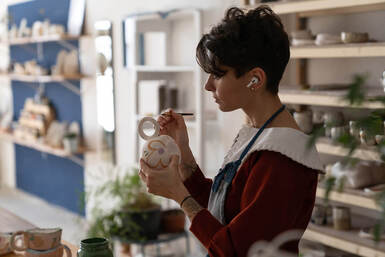 Have you felt alone? Afraid of not fitting in? Together with the Creativity Courses, join the Creativity Studio, where Creative People come together to support each other, express and share like minded voices, personalities and experiences. Come together to give each other permission to be their authentic selves. This is an exciting, revolutionary place for Creative People that is long overdue. I am starting this community and learning environment small, but expect it to grow- and hope it will quickly! I hope you will join us and come secure your place towards the Creative life you deserve. The Creativity Courses: How to Get InvolvedHow you can get involved with the Creativity Courses and Creativity Studio today: 1) See what offers are currently available for the Creativity Courses and Studio 2) Subscribe to one month of the Creativity Courses and the Creativity Studio 3) Read more information about the Creativity Courses and the Creativity Studio More articles like Inspired by Creative PeopleFoundations in Creativity, Creativity Courses, Creativity and Mental Health: Rolling with Resistance, The Psychology of Creativity: Creative People and SAD, Psychology of Creativity During the Holidays, Tools for Creative People: Spoon Theory, Grants for Artists, Creative People and Abandonment, Intense Pressure for Creative People,
One of my own biggest life- changing moments was my initial discoveries in research and psychology of Creative People. Suddenly I understood that I belonged somewhere, that I wasn’t weird, that there was a precedent for the way I experienced the world. The more I learned, the more I felt myself give myself permission- even feel empowered- to live life according to my own rules and sensibilities. The results? The world that had felt so hostile, rejecting, unfriendly and dark, began to feel so full of opportunity, vibrant, welcoming and alive. Understanding Your Value and Worth as a Creative PersonThe importance, I have discovered, over and over again, of understanding myself as a Creative Person, the value and worth this gives me, the strengths that comes with it, and the other people around me that share these values and ways of seeing things- is bottomless. Life- changing. Supporting and Understanding Your Creative Personality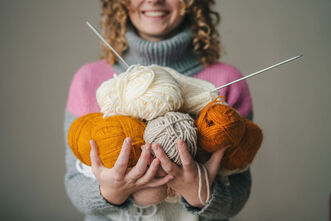 I have come to understand and value my work as a counselor and a coach in Creativity, and truly fall in love with my work. I have also come to realize the deeply personal journey of discovering, creating and understanding oneself as a Creative Person. It felt imperative to me to create, as much as possible, the information, atmosphere and support to allow this journey for as many Creative People that can benefit. Enter the "Creativity Courses"!This is the story behind the Creativity Courses! With Courses from 100 levels to 200 levels, I offer you a foundation of understanding in Creativity, from research in psychology, education, and more about the history of creativity, creativity theory, and its applications to you and your life. The information is laid bare for your evaluation, assessment and application to your own life. Creative People in CommunityWorking with Creative People, also emphasized enormously through the pandemic, I have understood the value of a creative community. Creative Communities help us understand ourselves as Creative People, gain support for the specifics that are our creative lives, and our creative projects. Creative Community can be hard to find and maintain, because of these same variables! What is the Creativity Studio?As part of the Creativity Courses, I host an online, private community of dedicated Creative People, also invested in learning about Creativity. The so-called Creativity Studio fosters support between learners, facilitates q and a throughout the courses, and encourages interaction as you study. A truly supportive atmosphere, moderated by a therapist and creativity coach (me!) Creative People Can Change the WorldI say often that Creativity is about changing lives. Creative People discovering their strengths, each other, healthy lifestyles that serve them, and that they aren’t alone, is life changing. The Creativity Courses and the Creativity Studio exist online an a virtual learning space that is interactive, to support locations, lifestyles and schedules all over the world. This is an exciting and unprecedented opportunity for all of us. Consider Starting a Creativity Course Today!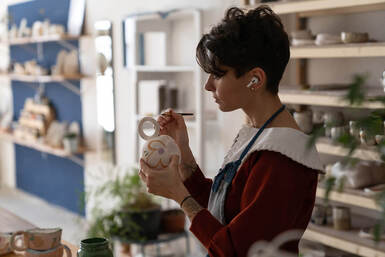 While the Creativity Courses are new, you can lock in introductory offers. Secure the start of your Creative Journey today, in one of these ways: 1) Book a month of Creativity Courses and Creativity Studio Access 2) Read more about the Creativity Courses 3) Book a free consultation More articles like Foundations in CreativityCreativity Courses, Creativity and Mental Health: Rolling with Resistance, The Psychology of Creativity: Creative People and SAD, Psychology of Creativity During the Holidays, Tools for Creative People: Spoon Theory, Grants for Artists, Creative People and Abandonment, Intense Pressure for Creative People, Creative People and the Urge to Shop,
This blog is about the exciting new launch of the Creativity Courses, by Creatively, LLC, launched in February, 2023, at www.thecreativitycourses.com Life moves fast- and time for ourselves is probably the hardest time to find. Somewhere, we also know, time for ourselves is the most important time to have. That means life changes, and setting and reaching goals is a frustrating and pretty unmanageable. The problem of time, and other problems, like money and energy are the focus of a new branch of services at Creatively, called the Creativity Courses. The Creativity Courses Include Features That Matter and Address Real Problems that Creative People face:
The Phases of Creativity CoursesThe Creativity Courses are in 3 Phases, and each Phase will be released separately. The work of each Phase of Creativity Courses is intended to prepare you for the more intense work of the subsequent phase, and, therefore, the Phases should be completed in numerical order. The Phases are intended to be subscribed to for one month of work at a time, and, can be renewed for a many months as you deem them helpful. Each Phase includes access to the online Creativity Studio, where your fellow Creativity Course Members will also have access to support, discuss and share questions about the course content and their creative lives. The Creativity Courses: Phase OnePhase One: You are Not Alone Includes the first 5 lessons (You are Not alone, Wellness in Creative People, Getting Back on Track, Building a Creative Space, and Building your Creative Community) as well as access to the Online Community. The Lessons in Phase One Phase One of the Creativity Courses contains five main lessons, designed to help you understand yourself as a Creative Person, how to take care of yourself in this new space, connect to your Creative Community, and prepare yourself to commit to and do the work to live a healthy life as a Creative Person. In these lessons you will learn about Creativity Research, Psychology and Education to support a change in perspective and lifestyle. By the end of this lesson, you will be able to see yourself through the lens of your Creative Personality, and all the doors this opens for you in your life! Creating Wellness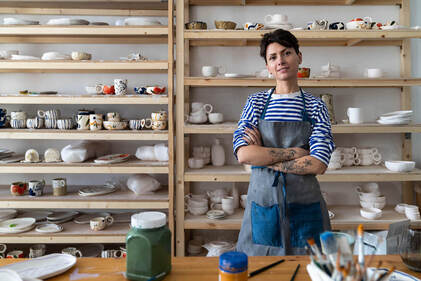 If you have identified yourself or begun to wonder if your personality is creative, that is wonderful! You have a powerful set of characteristics with which to flourish. Here at Creatively, you have found a wonderful place to get on track to do just that! Here are some steps you can take right now, to start your journey as a healthy and successful Creative Person:
More Articles Like Creativity CoursesCreativity and Mental Health: Rolling with Resistance, The Psychology of Creativity: Creative People and SAD, Psychology of Creativity During the Holidays, Tools for Creative People: Spoon Theory, Grants for Artists, Creative People and Abandonment, Intense Pressure for Creative People, Creative People and the Urge to Shop, Creative People Who Don't Know Who They Are
There is a moment. In fact there are many- in a Creative Person’s life- when you are between activities. You have something looming before you that you need to do. Sometimes it is big- a presentation, a new job, a performance. Sometimes, it is more routine- getting out of the car, up out of bed, out of a chair. Consequently, a similar principle applies in each situation: resistant and the changing of stasis. Living things, human beings specifically, and Creative People especially, are resistant to changes in stasis. Your body and mind are in a “place,” especially a lower energy place, they naturally resist changing to a new “place,” especially a higher energy place. Creative People Have A Unique Ability to Perceive and FeelThe concepts of resistance, change and stasis in Creative People are related to a previous post about Creative People and their sensory perception. Essentially, Creative People, due to powerful senses and emotions, also have powerful and the levels of involvement in both their internal and external worlds. This impacts the way that you as a Creative Person respond stimuli. Some Creative People may relate this to things like diagnosed or undiagnosed ADHD in their past, and/or may be aware of other sensory diagnoses. While this may or may not apply to every Creative Person, what is important here is powerful sensory sensitivity and perception is related to your personality as a highly Creative Person. Highly Sensitive Creative PeopleThe powerful relationship is the for two reasons: The first reason is the human tendency and really the animalistic tendency to seek stasis. Stasis is has been reconceptualized by science and anxiety research in different ways, and one of the leading theories that I like (and there's a past post about this, too, that you could search for if you're interested in learning more) is allostasis. How Allostasis Affects Creative Personalities Allostasis combines the body’s different types of “stases” into a more collective concept. Preferred homeostasis in the body like temperature range, hydration range, oxygenation range and so on contribute to a level of overall stress in the body. When these stases are balanced, the body is in a state of allostasis. When these stases are unbalanced, the body is said to carry stress, or an allostatic load. Human beings naturally prefer an existence of allostasis, meaning, we are not carrying a load of stress. We are in a balanced space of being able to predict oncoming stressors, not carrying a load of pre-existing stressors, but generally in a state of peace and balance. Creative People are Especially PowerfulAs highly Creative People, we know that our emotions are powerful. We know that our sensory perception is powerful. Overall, you are likely to be especially sensitive to experiences as a creative human being. This means if you have reached a moment of of homeostasis, such as in allostasis, your body is at rest and it can be especially difficult to disrupt that to ask your body to go someplace cold, hungry or to push yourself into activity requiring more energy or work. Mixed Messages to Creative PersonalitiesToo often, Creative People have been given the message that their powerful feelings and ways of living are problematic and that they should change. My regular message to Creative People is instead to recognize living loudly is part of who you are, and, to embrace and understand these features rather than wasting energy fighting them. Creative People and the Methodology of Mindfulness When it comes to resistance, we again look to the methodology of mindfulness as a technique to embrace our natural Creative Personalities. We recognize and remember, that, because of who we are, and how we are designed as Creative People, changing from a place of stasis is hard. We are likely experiencing powerful resistance. This is not broken-ness in us, nor is it unnatural. This is simply a part of our normal experiencing. The next thing we do? We experience the resistance. We allow it. It is a part of our lives and all parts of us are a meaningful contribution to our lives as Creative People. We use mindfulness techniques to observe, not resist, and allow the resistance to be. We acknowledge it, and we move through. Mindfulness for Health and Balance in CreativesApplying mindfulness as a technique to support our Creative Personalities is another chapter in our Creativity Journey. It is one of our most effective tools to living naturally, healthy, creative lives. Creativity Coaches May Be Who You Need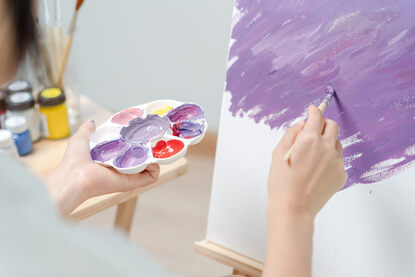 Interested in learning more about your Creative Personality, using mindfulness techniques, and living healthy as a Creative Person? If you are interested in real, impactful and lasting change for your creative mind, I would love to help you. Let's connect and launch your life to the next level! I have three steps you can take, right now from my site if you are ready to take an important step forward in your life: If you are interested in real, impactful and lasting change for your creative mind, I would love to help you. Let's connect and launch your life to the next level! I have three steps you can take, right now from my site if you are ready to take an important step forward in your life: 1) Book a Free Consultation. All new clients to Creatively, LLC are entitled to a 15 min, free consultation to sit with me and discuss your needs, services available, and we can problem solve and hand-pick best next steps to help you succeed. 2) Take a Creativity Course where you can build support, accountability and a network of Creative People as a stepping stone towards reconnecting and committing to your authentic, creative self. 3) Book a Coaching Package. Are you a working Creative in need of specific support? I offer a range of Creativity Coaching Packages from 150$- let's get started with one that is right for you. More Articles like Creativity and Mental Health: Rolling with ResistanceThe Psychology of Creativity: Creative People and SAD, Psychology of Creativity During the Holidays, Tools for Creative People: Spoon Theory, Grants for Artists, Creative People and Abandonment, Intense Pressure for Creative People, Creative People and the Urge to Shop, Creative People Who Don't Know Who They Are, Concierge Counseling for Creative People, Creative People with Headaches and Stomach Aches,
The psychology of creativity is a field that has less research than other areas of psychology because it is fairly new. Whenever I decide to start a new article, I like to begin by looking at the research that already exists within the field of psychology and creativity. In this case we are researching, creative people and seasonal affective disorder, otherwise known as SAD. What is Seasonal Affective Disorder (SAD)?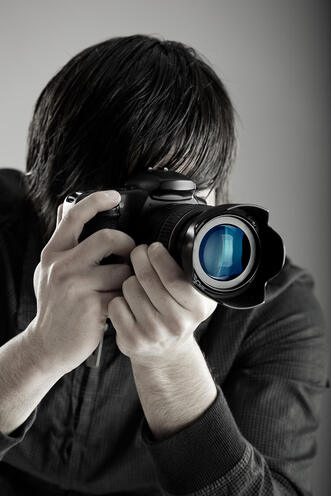 Background on seasonal affective disorder. This is a diagnosis that exists in the DSM (diagnostic and statistical manual) index of all the mental health disorders as identified by the American psychological association. Seasonal affective disorder, generally indicates mood and behavior changing with the seasons. Specifically, when we talk about SAD, we tend to mean the depression of mood and behavior that occurs during the winter season. When I began looking into the psychology of creativity, creative people, and SAD, it was with the question of how creative people were impacted by SAD as compared to the general population. I wanted to know what research there is on the subject. Research About Seasonal Affective Disorder (SAD)What I found was a research article published in 2020 by Wim H. Winthorst, Elisabeth H. Bos, Annelieke M. Roest and Peter de Jonge. This project was done as an Internet-based crowdsourcing project on the Dutch general population with a sample size of over 5000 people. What the study was looking for was how mood and behavior change from season to season, including summer, spring, winter, and fall. Specifically, this study was also interested in the character trait of neuroticism, and how this moderated any behavior or mood changes of participants. The main finding of the study was that there was no significant changes found amongst participants mood and behavior between seasons. In other words, the study found no significant existence of seasonal affect disorder amongst the participants in their study. However, the study did find a significant change in mood and behavior between the seasons, amongst participants, who tested highly with the trait of neuroticism. Neuroticism and Creative Personalities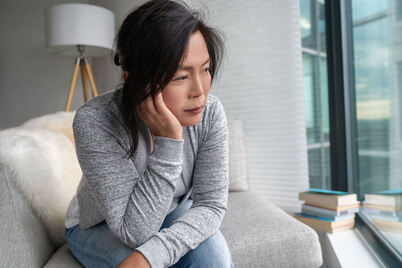 There is a reason that this stood out to me. Not the least of which that this study is discrediting a major diagnosis frequently used in the DSM, but also that the study attributes the existence of this diagnosis to existing only well let's say, mainly, if not only, amongst those who also exhibit the character trait of neuroticism. Neuroticism is significant to me because this is a personality trait that those with creative personalities also score highly on increase in personality tests. If you are interested in specifically what the character trait of neuroticism means, before, jumping to conclusions, or worrying, there is more information on this blog, and on the create well minute cast YouTube channel about the significance of the character trait of neuroticism. Creative People Impacted by SADSet aside, there are some interesting conjectures that I am making from this study. First, it seems that my original question, that creative people, or if creative people are significantly impacted by seasonal affective disorder is true, and, in fact, creative people may be the only, according to the study, people impacted by seasonal affective disorder. This, leads me to conjecture number two: that, perhaps, if you suffer from seasonal affective disorder, this could be an indicator of creative personality traits in reverse. Conclusions, an a Call to the Creative CommunityI realize I am reading a research done by someone else, two years ago and making a possible conclusions from their studies conclusions. However, to me, they are very compelling. I am interested in hearing the thoughts of the creative community, educators, researchers, and others in the field, and what your thoughts and experiences are on the matter. Interested in More Psychology for Creative People?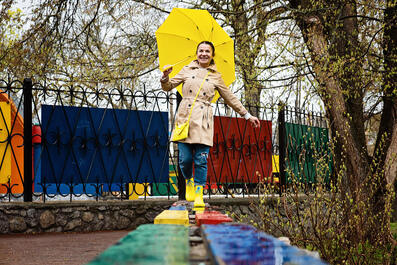 If you are a creative person, are interested in the psychology of creativity, have questions about either of these, or would like to have a free consultation to talk more about anything that you have read on this website and/or in this article, I would love to talk to you. We can even discuss concierge counseling services as an option. Here are some steps you can take from this article to learn more: 1) Book a Free Consultation. All new clients to Creatively, LLC are entitled to a 15 min, free consultation to sit with me and discuss your needs, services available, and we can problem solve and hand-pick best next steps to help you succeed. 2) Join my Artists in Residency Program. This is a Free, Online Community of Artists where you can build support, accountability and a network of Creative People as a stepping stone towards reconnecting and committing to your authentic, creative self. 3) Book a Coaching Package. Are you a working Creative in need of specific support? I offer a range of Coaching Packages from 150$- let's get started with one that is right for you. More Articles like the Psychology of Creativity, Creative People and SAD:Psychology of Creativity During the Holidays, Tools for Creative People: Spoon Theory, Grants for Artists, Creative People and Abandonment, Intense Pressure for Creative People, Creative People and the Urge to Shop, Creative People Who Don't Know Who They Are, Concierge Counseling for Creative People, Creative People with Headaches and Stomach Aches, References:
Seasonality of mood and affect in a large general population sample From: PLoS ONE (Vol. 15, Issue 9) Peer-Reviewed Authors: Wim H. Winthorst, Elisabeth H. Bos, Annelieke M. Roest and Peter de Jonge Date: Sept. 14, 2020 As you are learning about your creative personality, and embracing your strength, you will begin to make other changes in how you live in what serves you and what doesn’t- what parts of your life were chosen for others, and what parts of your life you chose for yourself. Creative People and Holiday ValuesLet’s consider the upcoming holidays. In mainstream society in the United States, at least, they have become about commercialism, conformity and displays of wealth. We try to give, eat, decorate and display, bigger, better, and more, it seems, with every passing year. Without making value statements about it- that is not my purpose here- I want to instead, take a moment for you to consider what aspects of your current holiday celebrations serve you, and which don’t. A good tool for doing so, is through mindfulness. Mindfulness as a Tool for Creative People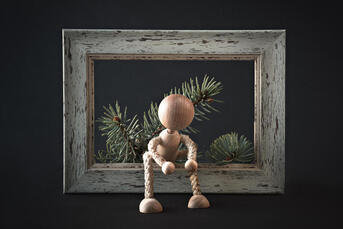 By now you have had some introduction to what mindfulness is and some ways to use it in your life. Mindfulness is beautifully simple and uncomplicated. When we are mindful, we are quieting the mind and focusing on our present experiences. Even those of us that feel seasoned and successful in mindfulness practices can get diverted from this state of being during the Holiday Season. Expectations vs. RealityPart of the problem with the Holidays is we want them to “be” something. Therefore, we have expectations for them. We compare out and feel pressure to deliver certain things to those around us. Usually these are with the intention of giving the perfect Holiday Season to others. This year, I give you permission to be a little more selfish. Ask yourself what makes the Holidays memorable and special for you? Of the list of things you “have to do” for your Holiday Season- why do items make that list? Let’s make mindful choices this year for how and why we celebrate. Try this simple exercise (as always I advise not to do these exercises without the guidance of therapy sessions- so let’s schedule one of those, too!): Simple Holiday Mindfulness Exercise for Creatives Make a list, drawing or representation of your choosing of what you plan to do for this Holiday Season. If that is already too overwhelming (hmm) then choose one holiday for the exercise. When you are finished, go through each thing you plan to do and “mini-meditate” on it. Consider it. Scan your emotions, scan your body. As you consider this thing, how does your body react? With tension? With warmth? What are your emotions associated with this thing? Stress, joy, something else? Ask yourself, why do you do this thing during the Holidays? For yourself, for others? Allow your mind to consider and hold this information as you think about this first thing. Your goal this year is a peaceful, mindful, happy Holiday Season. Does this thing fit into that picture? Continue the exercise as you go through all your plans. Amend them to take away or add what brings you closer to a more peaceful and enjoyable Holiday Season. Allow yourself to feel the anxiety of eliminating things you might be accustomed to doing from your list. Give yourself permission to do something different. Focusing Less on "Perfect"So often when there are big calendar events like during the Holiday Season, we become so focused on outcomes and making them “perfect,” we miss enjoying them for what they really can be: peace, happiness, family, love, fulfillment and more. This year your new Holiday Tradition is yourself: create a more mindful Holiday Season. Ready to Learn More Psychology for Creative People?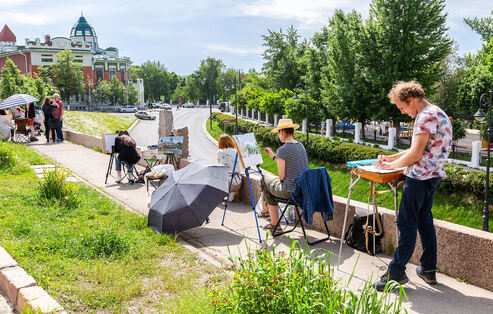 If you are a creative person, are interested in the psychology of creativity, have questions about either of these, or would like to have a free consultation to talk more about anything that you have read on this website and/or in this article, I would love to talk to you. Here are some steps you can take from this article to learn more: 1) Book a Free Consultation. All new clients to Creatively, LLC are entitled to a 15 min, free therapy or creativity coaching consultation to sit with me and discuss your needs, services available, and we can problem solve and hand-pick best next steps to help you succeed. 2) Join my Artists in Residency Program. This is a Free, Online Community of Artists where you can build support, accountability and a network of Creative People as a stepping stone towards reconnecting and committing to your authentic, creative self. 3) Book a Creativity Coaching Package. Are you a working Creative in need of specific support? I offer a range of Coaching Packages from 150$- let's get started with one that is right for you. More Articles Like Psychology of Creativity During the Holidays:Tools for Creative People: Spoon Theory, Grants for Artists, Creative People and Abandonment, Intense Pressure for Creative People, Creative People and the Urge to Shop, Creative People Who Don't Know Who They Are, Concierge Counseling for Creative People, Creative People with Headaches and Stomach Aches, Creation Translation
Creatives, I can’t get over how the universe works in cycles and patterns. Part of the magic of my job is to vicariously experience, like a fly on the wall, so many different walks of life- I truly feel the magnitude of the gift of hearing your stories. It is from my third person perspective that I see cycles emerge- patterns of high and low energies, trends in struggles and successes, commonalities in content and themes. I am in awe and amazement of the beautiful intricacies of life that unite the human experience. Time and again I watch people who don’t and will probably never know each other struggle together, succeed simultaneously and seek the same insights at the same time. I find myself giving the same models, theories or suggestions in bursts, to be immediately followed by a fresh wave of commonalities. And so again this week- I bring you a theme that has been a focus lately in the Creatively rooms. I trust to the ebb and flow of the universe that it is timed well for your journey. Tools for Creative People: Spoon TheoryToday’s topic is our innate psychological capacity to handle stress. There are many ways to conceptualize this- but by far my favorite is commonly called “spoon theory.” Imagine a psychologist at a restaurant with her psychologist friends, trying to describe a phenomenon she has observed in her work. She has noticed that the ability to take on stress is finite- each individual seems to have a unique threshold. She scoops up spoons from nearby tables and lays them down in front of her- representative units of stress management. She postulates that each part of our lives takes a certain number of spoons- some more than others- and when all spoons are in use (being “out of spoons”) you are in trouble. She suggests that psychological illnesses represents a certain number of spoons (depression, anxiety, bipolar) other psychosocial factors of life represent others (medical problems, financial worries, jobs, relationships). Freeing Your Spoons: Making Space for Creativity Her theory has many other facets, and also isn’t presented without solution- she also recommends activities that “free up spoons.” These are your personal recharging strategies- some of them fairly universal- a good night’s sleep, good nutrition, good activity levels, being around good and supportive people. Other strategies are more personalized- (read: individual coping skills), “me” time for introverts, “others” time for extroverts, “creative” time for creatives, and more. The short answer here is you are in need of your own personal cocktail of spoon- freeing things, and part of your regular self awareness should be checking in with and improving the effectiveness of this recipe. Stuck? Create More.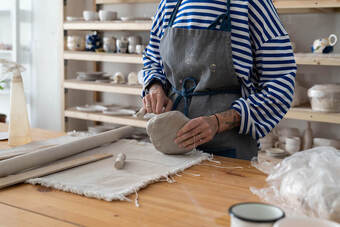 Let’s take this theory and apply it to our creative process. I have said before that creativity necessitates giving of ourselves (see creative personality posts) and therefore- takes spoons. We also talk about creative flow of energy, being in the creative zone- this happens when we have enough spoons. In a creative rut? You guessed it-possible explanation: out of spoons. The other thing to remember is you are caught in a feedback loop a bit here: creating takes spoons, but it also frees up your spoons. I suppose this just proves what I regularly say to the creative people I work with: creative people need to be creating to stay well. Feeling stuck? Create more. Feeling low in energy? Create more. Yes- that first push will take spoons- so do other “spoon-freeing” activities to generate some initial energy- but if you are creating regularly you can be in your own self-sustaining cycle of spoon maintenance. Spoon Theory: Simple, Yet PowerfulThis is simple language to start a conversation ultimately about balance and psychological self care and use of resources in your life. Come sit on my couch and let explore. Interested in More Psychology for Creative People? Research in Psychology (including my own!) has begun to identify the important and unique features of Creative People and their personalities. This is so important when learning to care for yourself as a Creative Person in the world and live well. Ready to learn more about yourself as a Creative Mind, and what that means? Try one of these three things, today: 1) Schedule a free individual consultation for creative people 2) Get started with creativity counseling 3) Get started with creativity coaching More Articles Like "Tools for Creative People, Spoon TheoryGrants for Artists, Creative People and Abandonment, Intense Pressure for Creative People, Creative People and the Urge to Shop, Creative People Who Don't Know Who They Are, Concierge Counseling for Creative People, Creative People with Headaches and Stomach Aches, Creation Translation, Crisis of Meaning: Creative People Lost References:
https://familyandchildtherapy.com/2019/11/07/how-the-spoon-theory-can-help-us-put-a-fork- in-poor-communication-and-self-care/ Miserandino, Christine (2003). "The Spoon Theory". But You Don't Look Sick. Archived from the original on 17 November 2019. Retrieved 5 July 2017 Did you know there are grants available for artists and creatives, both in the United States and in other countries, like Germany, Canada, and the United Kingdom? Let's talk about what you need to know as a creative person. Getting a Grant for Artists and CreativesGrants are a great way for artists to be able to support their ongoing creative work. Think of it like a job application for you to be able to continue creating. Many other countries in fact, have established things like grants and residencies into their infrastructure in such a way that it allows artists to have gainful employment as artists and receive payment for their work in this way. In this article I want to discuss grants that are available near you and abroad. Grant Opportunities for Artists in Maryland There are both public and private grant funding opportunities in the state of Maryland and in the United States specifically in the state of Maryland I've had the most experience working with the Maryland state arts Council. The Maryland states arts Council is separated into separate hubs based on geographical area like county art councils. The Maryland state art Council offers several grant programs to support the art creation of both organizations and individual artist in the state of Maryland. Two of these that have rolling application deadlines and can therefore be applied to at any time throughout the calendar year are professional development grants and creativity grants. Creativity Grants in MarylandProfessional development grants allow an artist to have an opportunity to grow their knowledge or skill set within a specific subject area. If you are an artist and seeking to develop knowledge or information in the arts and have been able to find the information, class, or skill set, that you wish to develop you may apply for a professional development grant through MSAC. An example of this is taking a course of creativity coaching with Creatively LLC. MSAC Professional Development GrantsCreativity grants at the Maryland state arts Council fund organizations and individuals to develop specific specific creative projects or to support the operational budget for the year of creative programs. More Grants at MSACThere are other grants available through the Maryland state art Council and you can find a listing of them and their criteria and additional information on their website, here. There are additional public and private grant opportunities available throughout the state of Maryland and in the United States and you can find more information on artist grant opportunities on larger databases referenced here. Grant Opportunities for Artists in Germany In Germany, arts and culture are both privately funded and publicly funded. Both by companies and foundations privately and public funding by states supporting efforts of private donors through tax breaks and grant programs. This allows the federal government to establish a creative social class of independent creatives to enjoy security similar to those who are gainfully employed. Learn more about artist grants in Germany here. Artist Funding Opportunities in CanadaThe Canadian arts council separates their grants into six separate components to explore and create for organizations an individual artist vibrant and diverse art to engage in sustain Canada's creative communities to create no and share the arts and cultures of the first nations in peoples in Canada supporting artistic practices the arts across Canada and arts abroad. United Kingdom Funding for ArtistsIn England, there is public money from the government and the national lottery used to make sure creativity amongst Artis is given a chance to thrive. Learn more about these artist funding programs in the UK here. Learn More About Grants for Artists1) With a free individual mental health consultation with Creativity Coach, Cindy Cisneros, 2) As part of your journey and creativity coaching, or 3) As part of your journey starting creativity counseling. Other Articles Like "Grants for Artists"Creative People and Abandonment, Intense Pressure for Creative People, Creative People and the Urge to Shop, Creative People Who Don't Know Who They Are, Concierge Counseling for Creative People, Creative People with Headaches and Stomach Aches, Creation Translation, Crisis of Meaning: Creative People Lost
A regularly featured session topic amongst the Creative People I serve in therapy and coaching is abandonment and isolation. This generally falls into two categories: within families and socially. While anecdotally, knowing what I know of Creative People and their personalities, this makes sense to me, I decided to see if there is any research available on the topic. Individuality and Authenticity Creative Personality TraitsGrounding this search for understanding is our knowledge of the Creative Personality, and its hallmark feature of need for authenticity and individuality. While seeking individuality is a common human personality trait, Creative People are further driven by a pursuit of living authentically. Beyond standing out in a crowd, Creative People experience a profound need to live their lives in a way that is consistent with their innermost beliefs and desires. This is a powerful guiding force to important choices made in their lives. When we remember that Creative Personalities are neurodiverse and in the minority of the general population, we can understand the that pursuit of authenticity also puts Creative People in positions where they oppose norms, stand out, and make themselves otherwise vulnerable to criticism and rejection. Rejection and Tension With Families of Origin There is a known and accepted correlation in psychology between personality and stages of growth and development. In fact, many psychological theories have.connected family of origin to behavioral and experiential traits in our personalities, and view psychology specifically through this lens. Regardless of how impactful one sees their childhood development upon their experiences, the experience of family acceptance or rejection is important. A noticeable correlation amongst Creative People and families of origin stories, is rejection, and/or tension in families of origin. Freedom, Independence, Authenticity, and Rejection...Recipe for Creativity? In a study by Jiajun Guo, Jing Zhang, Weiguo Pang (2021), they find that both “parental warmth and parental rejection were positively associated with creativity.” The study goes on to find specific mediating variables in each family type, impacting creativity in children. According to the study: “While autonomy-supportive family theories generally reflect the positive side of family influences, a bulk of evidence has pointed to another possibility— the absence of harmony or presence of conflicts in families is also related to later life creative achievements. For example, children with creative giftedness or artistic interests were often found to come from families replete with tensions, parental conflicts, and stress (Brooks, 1973; Koestner et al., 1999).” The study also explores independence and authenticity as “freedom” experienced as “rejection” in these families, which, “initially serve the purpose of a defense mechanism but later enable them to break away from convention and finally lead to creative achievements.” This study, and others agree, that the direction of causation can be unclear, in other words, that household influences precipitate creativity, or creative individual precipitate household difficulties, or both. However, the majority of studies exploring this relationship establish a link, and interviews with my own clients substantiate this. Creative People and their FriendsCreative People regularly experience smaller groups of closer friendships, often from a variety of other groups and backgrounds. They regularly lament during session that they don’t have “many friends,” or that they feel “abnormal” in this way. However, from my position, hearing consistent information from many Creative People, it seems very normative. It also makes sense with what we know of Creative People seeking authentic and deep connections. Scott Barry Kaufman, a Social Psychologist, further comments on the social engagement of creative people: “By definition, creative solutions are unusual, involving the recombination of ideas. Unusual, divergent ideas and access to distant, remote associations are hallmarks of creative thinking. Perhaps those who like to distance themselves from others are more likely to also recruit associations from unusual places and think beyond conventional ideas.” (Barry Kaufman, 2012) Authenticity as a Creative PersonKaufman believes that nonconformity, as a feature of creative authenticity, is important when separating social groups and friendships. In other words, it is more important for Creative People to be authentic, and associate with others that are like-minded, than to achieve other social goals. Reclaiming Your Strength as a Creative PersonalityWhat is important in both family and social associations for Creative People, is understanding your Creative Personality, so as to reclaim your strengths from stigma. While many Creative People see themselves as “odd” or “abandoned” or “unworthy,” research, experience, and expertise show us it is in fact, dedication to Creative authenticity, and meaningfulness, that sets you apart in your individuality. These are features to be celebrated and supported! They are necessary for you to live well, they are important for your relationships, and they are vital to society, at large. Would you like to learn more about your Creative Personality?1) Book a Free Consultation. All new clients to Creatively, LLC are entitled to a 15 min, free consultation to sit with me and discuss your needs, services available, and we can problem solve and hand-pick the best next steps to help you succeed. 2) Begin Counseling for the Modern Day Creative Person. Are you a working Creative in need of specific support? I offer a range of Counseling Services so you can select exactly what you need, and nothing that you don't. Creativity Counseling offers 30 min sessions to 60-minute sessions, as well as asynchronous support. 3) Book a Coaching Package. Are you a working Creative in need of specific support? I offer a range of Coaching Packages from 150$. Let's get started with one that is right for you. More Articles Like Creative People and AbandonmentIntense Pressure for Creative People, Creative People and the Urge to Shop, Creative People Who Don't Know Who They Are, Concierge Counseling for Creative People, Creative People with Headaches and Stomach Aches, Creation Translation, Crisis of Meaning: Creative People Lost, Coaching Creative People, A Creative Personality Snapshot References: Jiajun Guo, Jing Zhang, Weiguo Pang. Parental warmth, rejection, and creativity: The mediating roles of openness and dark personality traits. Personality and Individual Differences, Volume 168, 2021.https://doi.org/10.1016/j.paid.2020.110369 (https://www.sciencedirect.com/science/article/pii/S0191886920305602)
Barry Kaufman, Scott. Social Rejection Can Fuel Creativity. Social rejection fuels creativity for people with an independent mindset. Posted August 24, 2012 There are traditional models and modes of understanding established through research about creativity and stress. The difficulty is, over time, these models have begun to contradict each other. What is True About Stress and Creativity?You may have heard the one theory, that, stress is the enemy of creativity. Conversely, it has been said that creative ideas are born and evolve under pressure. Which of these is true? They both seem logical. That is because- they both, in fact, are true at different times for different people. How Does Stress Impact the Creative Process?I recently stumbled upon a wonderful article by Daniel Kuntz1 in which he succinctly summarizes some of this research, and a more moderate conclusion in Creativity Research: “The trick, then, is knowing your stressors—though it is also a matter of knowing how much you can take" (M. Runco, University of Georgia, by D Kuntz). In other words, what Kuntz describes that Runco found, is that knowing your optimal stress level, as well as what your stressors are, are the most important features in knowing how pressure and stress impacts your creative process. Thriving in High-Pressure or Low-Pressure Spaces Human Sciences have increasingly moved towards behaviors, emotions, experiences and more as existing on a spectrum, more than previously-used stand-alone diagnoses, terms, etc. This has also been an increasingly accepted definition for stress. It makes sense that not the same amount of stress or pressure would affect a Creative Person in the same way. Some Creative People thrive with deadlines, in competitions, and with high levels of pressure (like our earlier example of research: necessity as the birth of creativity). Other Creative People thrive with low to no stress or pressure in order to generate new ideas (like the models stating stress is the enemy to creativity). And- of course- examples abound in between these two points. Different Strokes for Different FolxA second important factor noted in Creativity Research is that what is considered stressful is not the same for everyone. Events, for example, generally labeled “good” by society, science, etc, may be experienced as stressful by some, and non-stressful by others, and vice-versa. Similarly, adopting a spectrum approach to how stressful events and conditions are to you, and getting to know yourself well as an individual is imperative. There are vast differences between levels of stress, for example, between living environment conditions, social conditions, noise levels, social events, life events and many, many more. Drop the Labels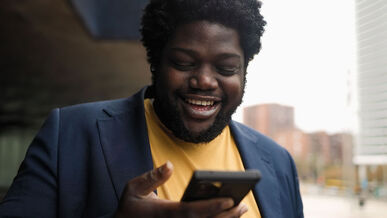 As you develop clarity about your optimal level of pressure, and what conditions create this pressure and stress for you (and a separate debate could be had to emphasize the importance of shedding the label of “good” or “bad” for the terms “stress” and “pressure,” for, in these equations they are merely formulaic and descriptive), your next task is understanding how to mitigate your levels of stress. Have you evaluated generally what levels of stress and pressure exist in your life? How does that compare to what you find optimal for your creativity? Now, as creative people, we as ourselves, what factors help us change that level of stress and pressure more towards what we find is optimum? Optimal Creative Conditions: Stress and Pressure IncludedUnderstanding how to mitigate your stress and pressure in order to be optimally creative is hard work. Implementing is even more difficult. It demands that you reflect and know yourself as a Creative Person, including the strengths and weaknesses of your Creative Personality, and well as knowing yourself and your intentions as an artist including your creative process, and what is beneficial or disruptive to that. Consider Coaching or Counseling for Creative PeopleConsidering stress and pressure as factors you can understand and manipulate in order to benefit yourself and your creativity is a new way of looking at your Creative Self. If you are interested in empowering yourself in this way, I would love to talk to you. Here are some steps you can take right now, to start your journey as a healthy and successful Creative Person:
Other Articles Like Intense Pressure for Creative PeopleCreative People and the Urge to Shop, Creative People Who Don't Know Who They Are, Concierge Counseling for Creative People, Creative People with Headaches and Stomach Aches, Creation Translation, Crisis of Meaning: Creative People Lost, Coaching Creative People, A Creative Personality Snapshot, © 2022 Creatively, LLC
www.creativelyllc.com Creative People, we know, feel things powerfully. Many Creative People have spent much of their lives suppressing traits of their powerful personality, told by society, family, friends, teachers, bosses, and more that their natural inclinations are “too much” or even “harmful.” In Creativity Counseling and Creativity Coaching, we learn the power, gifts and benefits of our Creative Personalities, and reclaim them. Your passion is your strength, not your problem. And so, for our conversation about the urge to shop, we start firmly from this position: as a Creative Person, you likely feel powerful urges to buy beautiful, useful and exciting things. You are not wrong for these feelings. In addition to powerful feelings as part of your Creative Personality, you also have powerful impulses. This is an important feature that facilitates your Creativity and your Creative Flow. The amount of energy required, both mental and physical, to innovate, design and put together new concepts, ideas and works is huge, and you need large energies to accomplish this. That is why you have them! Is impulsivity good for creativity? In fact, In a study by Brem and Utica (2019) a Creative Person’s autonomous performance improved directly related to their level of impulsively. In other words, the more impulsive a person was, the more creative they were. Impulsivity is a part of the creative personality.What we are essentially saying is the urge and impulse to buy, in this case, is a part of you. Let’s accept that together. It is a byproduct of your creativity- which is desirable. It is also, therefor, not going to change. That means fighting or blaming ourselves over it is unhealthy and harmful. However, this is likely the approach we have been given to work with- guilt, shame and suppression- when it comes to impulse buying. Options for Creative PeopleLet’s discuss some better options. When you can accept and embrace impulsivity and powerful emotions and innate and important parts of your creativity, and understand that resisting, controlling and fighting with them is a detrimental exercise for you, you have made great progress already. Redirection Strategies for Creative People Dholakia, Jun and Chowdry (2019) recommend a redirect for impulsive shopping. In fact, in their study they found that focusing the urge to impulsively buying instead on appreciation for what you already have, participants were significantly less likely to want to spend money on something new. This is an important finding, and pieces of this I would like to borrow and recommend to you, as a Creative Person. Based on my experience and knowledge of Creative People, perhaps we should add one additional component: creativity. Exercise for Creative People When you Feel the Urge to Shop:
Controlling Your Urges as a Creative PersonIt is important to remember, with such powerful energies at work as a Creative Person, to shut them down, dishonor or deny them, such as “don’t buy it” or “you are being greedy/stupid/ gluttonous/etc” is creating an expansive void inside of ourselves which is not sustainable and will ultimately lead to over-something in the future. This is why it is a better strategy to recognize the source of our emotions and redirect them towards something that will feel more satisfying to us long term. Applications With ChildrenCreative Children, with developing brains, growing personalities, synapses, emotions and emotional awareness, regularly feel powerful feelings and impulses. While they may need more support in managing them and understanding them, they are entirely capable! As everything with children, patience and consistency is key. Here is wonderful model for managing impulses, recommended by ADDitude (a great resource for neurodiverse families!), called “feeling the “urge monster”): For [adults]... Find a day, or a half day, or even a couple of hours, to spend following your own urges – walk in the woods, eat a hot fudge sundae, sleep late. If acting on some of your impulses would be inappropriate, let yourself explore them mentally. Ask yourself, “What is underlying this urge? Is there some way I can honor it?” Suppose you felt like telling off a friend. How could you communicate your needs to this friend without being explosively angry? Could you ask another friend to help you come up with the right words and practice them with you? Follow through on the action. Use this experience to help you connect with your child for the next part of the exercise. For [children]...If he is between the ages of 5 and 9, tell [them] you want to talk to [them] about the “Urge Monster,” that thing inside each of us that pushes us to do things we shouldn’t. (If [they are] older, you can talk more straightforwardly about uncontrollable urges.) Share some of your own urges as examples. Tell [the] child that it is important to feed the monster but not to let it control you. Ask [them] to talk about some of [their] urges. Work with [them] to think of ways to control the Urge Monster and to feed it [safely]. [1] Celebrating Creative PeopleIf you have powerful feelings, have struggled with impulsivity, and/or have felt stigmatize or silenced by those around you, these could be signs of your Creative Personality. Creative People are more than what they do- Creativity is who you are. If you are interested in learning more about reclaiming your Creative Strengths and living well, here are three steps you can take today: 1) Book a Free Consultation. All new clients to Creatively, LLC are entitled to a 15 min, free creativity coaching or counseling consultation to sit with me and discuss your needs, services available, and we can problem solve and hand-pick the best next steps to help you succeed. 2) Begin Counseling for the Modern Day Creative Person. Are you a working Creative in need of specific support? I offer a range of Counseling Services so you can select exactly what you need, and nothing that you don't. Creativity Counseling offers 30 min sessions to 60-minute sessions, as well as asynchronous support. 3) Join my Artists in Residency Program. This is a Free, Online Community of Artists where you can build support, accountability, and a network of Creative People as a stepping stone towards reconnecting and committing to your authentic, creative self. References [1]https://www.additudemag.com/positive-parenting-tips-impulsivity-self-esteem/ https://neurosciencenews.com/creativity-impulsiveness-14068/ “How to manage creativity time? Results from a social psychological time model lab experiment on individual creative and routine performance”. Alexander Brem, Verena Utikal. Creativity and Innovation Management. doi:10.1111/caim.12309 https://journals.sagepub.com/doi/full/10.1177/0743915618813582 Dholakia, Utpal, Jihye Jung, and Nivriti Chowdhry (2018), “Should I Buy This When I Have So Much? Reflection on Personal Possessions as an Anticonsumption Strategy,” Journal of Public Policy & Marketing, 37 (2), 260 –63. More Articles Like Creative People and the Urge to ShopCreative People Who Don't Know Who They Are, Concierge Counseling for Creative People, Creative People with Headaches and Stomach Aches, Creation Translation, Crisis of Meaning: Creative People Lost, Coaching Creative People, A Creative Personality Snapshot, From One Creative to Another, Finding your Creative Balance, Dream Theory for Creative People, Creative People, Mental Health and Creativity (C) 2022 Creatively, LLC
www.creativelyllc.com It's Back-to-School time, and that surfaces a slew of complex issues and feelings for Creative People - by nature of their Neurodiversity. Many students, both kids and adults, that have Creative Personalities, are also gifted, and many school systems are not adequately equipped to support you. Socially, educationally, creatively, and aspects of your personality can be misunderstood and present challenges in school. My fear for Creative People is they mistakenly learn their creative strengths as problems because they aren't main-stream, and therefore recognized or supported. Here is a place to get started, arming yourself with knowledge, to succeed as a Creative, Gifted, Neurodiverse student. Creative Personalities: Who are we?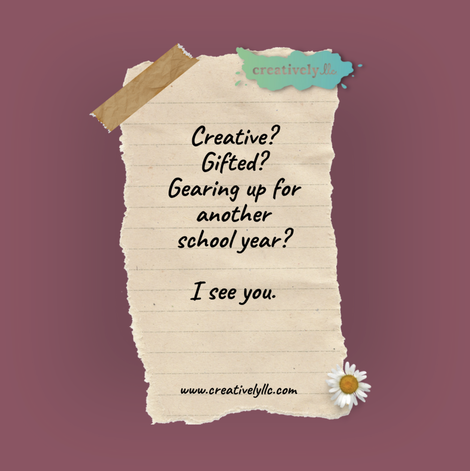 Reminder: Creativity means Creative Personalities, which is a specific set of traits and features that include the element of creating something. Not always in the Arts, Creative People are Scientists, Engineers, CEOs and business owners, Computer Scientists, Investment Analysts, Board Members, Franchise Owners, Administrators, Nonprofit Executives, Medical Professionals, and beyond. They are also Writers, Performers, Visual Artists, Culinary Artists, Directors and Filmmakers, Cosmetologists, Designers and more. Creative People also feature powerful emotions, a drive towards meaning making, authenticity, purposefulness, strong sensory capacities, and other aspects that set them apart in how they interact with and see the world. You can see more of the research about Creative People on this website under “Creative People.” Creative People, Neurodiversity, Gifted...What's the terminology here?I also want to note that I regularly interchange the words “Creative People” with “Neurodiversity” and “Giftedness” and within this article is no exception. While I want to acknowledge there are specific ways in which each of these have different uses from each other, they have significant overlap in the intended population described in much of the content here. What we are acknowledging with “Giftedness” and “Neurodiversity” and “Creative Personality” is the Creative Personality as a whole having non-typical ways of interacting with the environment that are extra-adaptive and beneficial to them, while underrecognized by the comparative population at large. Similarly, we understand “Giftendess” to mean the benefits of the Creative Personality such as hyper focus in areas of interest allowing rapid learning and information retention, flexibility and rapid progress. Supporting Creative Personalities in EducationWhile there is much progress to be done in education in recognizing and supporting Creative Personalities, for the purposes of this article we will focus on five:
Managing Emotions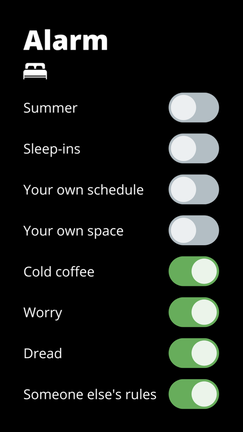 A regular features of the Creative Personality are powerful emotions. For a variety of reasons, acknowledging improvement in recent years of mental health in the public school system in some areas, school can be an emotionally unstable and difficult place. Generally expressing, communicating and feeling emotions is not supported by peers nor staff, “shutting emotions down” the regular practice, and this is especially unhealthy for the experience of Creative Personalities who experience so much of the world through a powerful emotional lens. The inability to express, communicate or share emotions in school without ridicule or correction results in an environment for Creative People that is poor in experience and rejecting of their overall experiences. Juggling RelationshipsMany Creative People demonstrate a combination of powerful intuition and empathy. While this serves their Creativity, Authenticity and Meaningfulness personality goals very well, it can be difficult to navigate at school. It can be confusing for Creative Personalities to see others not as impacted by events as they are, and/or not treating other, seeing others, or caring about others as they do. Without knowledge and support of their empathy and intuition, and how to protect themselves with healthy boundaries, Creative People often find themselves in relationships and friendships that are unbalanced, or otherwise unhealthy for them. Classwork That is Too EasyMeaningfulness is an important aspect to Creative People, and when they become excited about something, they will quickly learn everything they can about that subject- often quickly, easily and efficiently. Regularly, Creative People are quite bright, and, as a result of both of these, can find themselves in classes where the work they are doing are things they already know, and therefore, does not feel meaningful to them.edit. PerfectionismCounter to work being too easy, it is also commonplace for Creative People to fall into perfectionism in subject areas that they are highly invested in. Guidance and support to help redirect the powerful creative energy and separate work identity from personal identity is necessary for mental health and balance. School Feeling BoringAgain, related to work that is too easy, and perfectionism, regularly, Creative People find school to be boring, and, even if they can easily complete work, find it difficult to engage in subjects that do not interest them. This is because there is a direct correlation between motivation to do something and the execution of that thing, and this correlation is emotional, and therefore extremely powerful in Creative People. Once Creative Students understand this about themselves, they can released the shame often assigned to them as “lazy,” for example, instead redirecting their emotions to an aspect of school that is motivating enough to them to help move forward. Are you a Gifted, Creative, and/or Neurodiverse Student? It’s Time for Your Best School Year Ever.Let's connect and launch your life to the next level! I have three steps you can take, right now from my site if you are ready to take an important step forward in your life: 1) Book a Free Consultation. All new clients to Creatively, LLC are entitled to a 15 min, free consultation to sit with me and discuss your needs, services available, and we can problem solve and hand-pick best next steps to help you succeed. 2) Join my Artists in Residency Program. This is a Free, Online Community of Artists where you can build support, accountability and a network of Creative People as a stepping stone towards reconnecting and committing to your authentic, creative self. 3) Book a Coaching Package. Are you a working Creative in need of specific support? I offer a range of Coaching Packages starting at $150. let's get started with one that is right for you. More Articles Like Back to School for Gifted, Creative and Neurodiverse Students:Creative People Who Don't Know Who They Are, Concierge Counseling for Creative People, Creative People with Headaches and Stomach Aches, Creation Translation, Crisis of Meaning: Creative People Lost, Coaching Creative People, A Creative Personality Snapshot, From One Creative to Another, Finding your Creative Balance, Dream Theory for Creative People, Creative People, Mental Health and Creativity (C) 2022 Creatively, LLC
www.creativelyllc.com Did you know many Creative People don’t know that they are Creative? Being Creative is more than what you do, it is who you are!I am on a mission to find these Creative People - the ones who don’t know that they are Creative. They look like high achievers. Gifted People. Upwardly mobile People. They look like Smart People, Talented People. They can also be people who feel isolated. Like they don’t fit in. They often feel like their perspectives are different from their peers, that they are more passionate about things, that their feelings can become overwhelming. They may have been called dreamers, or impractical. Creative People Want Meaning...and More.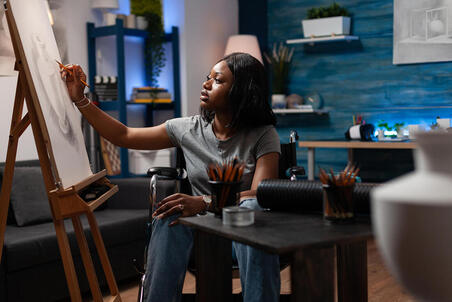 Some Creative People do Creative things. Others may want to do Creative things. Some may not recognize the things that they do as creative. They all want to do something meaningful. Their souls all demand of them to live their life authentically. They feel suffocated by a society that says “fit in and be mainstream.” They want to do more. Be more. And yet. They have powerful empathy, intuition and compassion. Oftentimes paired with deep-seated sense of responsibility, many highly Creative People made choices for the benefit of others. They neglected their own needs, their own dreams, and their own authenticity. They never really answered the questions, “who am I?” or “what do I really want?” Life has been about survival. Staying Hidden Doesn't HelpSomehow, they haven’t used their main strengths- they don’t know that they have been masking them to make others feel more comfortable. It has held them back and made them unhappy. Undiscovered Creative People, I am looking for you, to help you discover yourself.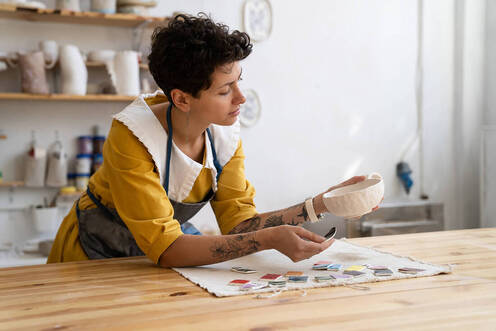 The time to prioritize yourself, create yourself, and use your true strengths is here. Your passions are your strength. Your passions give your life and the lives of others color and vision. You were made with big feelings, to live large, break molds, and authentically take up your space in the world. You were not born to fit molds, or meet any expectations but your own. You have probably lived your life with people around you that don’t understand you. This has caused you to doubt yourself. Second-guess your strengths. Live inauthentically. Be unhappy. Try to be like everyone else. But this is not who are you are. Creative Potential As a Creative PersonCreative people advance society, bring new ideas, grace us with new dreams, and color life with authenticity of experience. They give voice to humanity with a passion only they bring. When you are a Creative Person living to your Creative Potential, your live meaningfully, actualized and purposefully. Big questions fill in with answers and clarity becomes yours when you dare to authentically interact with your life. Knowing Your Creative GiftsIt is a difficult path, because it is uniquely yours. But, when you boldly take charge of your gifts, you thrive! It starts with knowing what your gifts are. With fully understanding who you are as a creative person, and reclaiming that identity for yourself. Once you fully stand in your strength as a Creative Person, you can begin to nurture yourself, and care for your strengths the right way. This is your path to success and happiness! Begin Counseling and Coaching for Creative People in Maryland, Virginia, and Beyond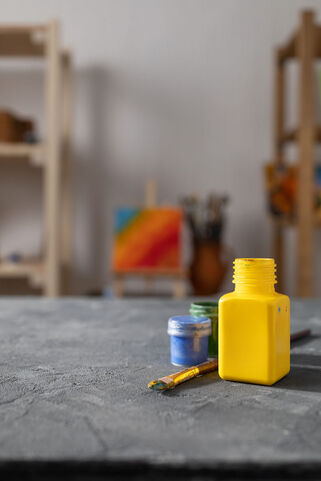 If you are interested in real, impactful, and lasting life change for your creative mind, I would love to help you. Let's connect and launch your life to the next level! I have three steps you can take, right now from my site if you are ready to move forward in your life: 1) Book a Free Consultation. All new clients to Creatively, LLC are entitled to a 15 min, free creativity coaching or counseling consultation to sit with me and discuss your needs, services available, and we can problem solve and hand-pick the best next steps to help you succeed. 2) Begin Counseling for the Modern Day Creative Person. Are you a working Creative in need of specific support? I offer a range of Counseling Services so you can select exactly what you need, and nothing that you don't. Creativity Counseling offers 30 min sessions to 60-minute sessions, as well as asynchronous support. 3) Join my Artists in Residency Program. This is a Free, Online Community of Artists where you can build support, accountability, and a network of Creative People as a stepping stone towards reconnecting and committing to your authentic, creative self. Other Articles like, “Creative People Who Don't Know Who They Are"Concierge Counseling for Creative People, Creative People with Headaches and Stomach Aches, Creation Translation, Crisis of Meaning: Creative People Lost, Coaching Creative People, A Creative Personality Snapshot, From One Creative to Another, Finding your Creative Balance, Dream Theory for Creative People, Creative People, Mental Health and Creativity (C) 2022 Creatively, LLC
www.creativelyllc.com There is an important aspect of Creativity Counseling that I don’t always talk about- but is a cornerstone to the way I treat my clients. It is fairly new in both medicine and mental health in general, and now that I have adopted it into my treatment orientation, I am never going back. I can’t believe I didn’t always think to operate this way! It is called: Concierge Counseling. What is Concierge Therapy or Counseling?Concierge Counseling, aka VIP Therapy, aka Boutique Therapy- a few other popular name for the same level of care have popped up- but they all mean the same thing. They are a solution for a big problem- a problem that many of us have had before. Does this scenario ring familiar to you? 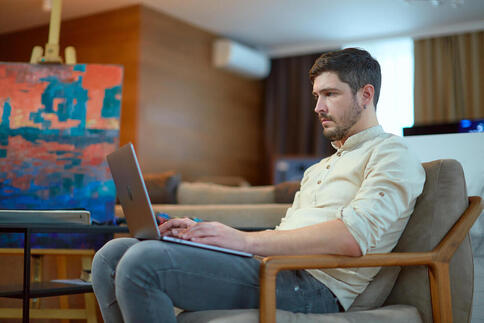 Your counselor: “You did great work today. Let’s reschedule our next meeting.” You: “Thanks. That sounds great. How about next week?” Your counselor: “The next available time I have is in three weeks.” Or what about this scenario: You (on the phone): “I’m so sorry I have to reschedule our next session- it looks like I will need to be at work unexpectedly.” Your counselor: “That’s no problem we can reschedule.” You: “Great- thanks for understanding. When you have available next?” Your counselor: “Looks like....next month?” Or even, the classic,: You: “Great I’m excited to start. When can we schedule our first session?” Your counselor: “I have 8am on Monday morning or 11am on Wednesday.” You: “None of those times work for me.” Your counselor: “Some of the other counselors at the practice may have different availability?” Traditional Counseling Has LimitationsYou get the idea. One of the biggest difficulties facing counseling today is time and availability. These problems are addressed in Concierge Therapy. Your provider (me, in this case) makes the agreement to only keep a limited, sustainable number of clients on their caseload at one time, so that you can make your appointments, week-to-week, and, reach your provider between sessions. Sound good, I think so too! Another Benefit of Concierge CounselingThe other reason why this is so important, is benefit 2 of Concierge Counseling. Do any of these scenarios sound familiar to you?  You: “We’ve been meeting for awhile now, but I don’t seem to be feeling better.” Your counselor “Well it depends on you- the more you put in, the more you get out” Or maybe something like this: You: “When we started, we agreed to work on (what you agreed to work on) but I haven’t made much progress on that. All we do is talk about my week. Your counselor: Hmm. I hear what you’re saying. I wonder why that keeps happening (or something else reflective)? Finding the right fit for your counseling is keyI am certainly not diminishing reflective therapy, or therapy spent in a beneficial way to anyone. However, what often happens in other therapy settings, is a lack a progress for the client. If a provider has committed to too many cases- for good or bad reasons, or a client has committed to a provider set up in this way, for good or bad reasons, limited progress can be made because limited resources are committed. In Concierge Counseling, the provider is committing resources that are sustainable to you, for lasting meaningful change. That means, you must be ready for and commit your time and energy and resources back to your own changes! Realities of Concierge Counseling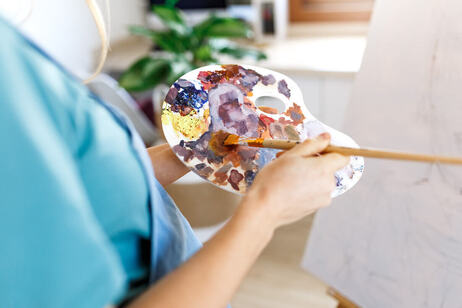 The reality is Concierge Counseling will be intense. The reality is Concierge Therapy will strike the nail of your problems on the head. However, your provider will be available to support you, and you and your provider agree to really work on issues so that therapy for you can be a short, important, meaningful phase of change in your life. One that you both commit resources to for lasting change that you can take with you to move forward with into the rest of your life. It is not a crutch or a bandaid. It is support for you to take what you need, change what you need, and live better. Does Concierge Therapy sound right for you?I have seen lives changed with the time, energy and resources brought to the table with this model. If you are ready to change your life, this is a powerful way to do it! Start Creativity Concierge Counseling TodayIf you are interested in real, impactful, and lasting life change for your creative mind, I would love to help you. Let's connect and launch your life to the next level! I have three steps you can take, right now from my site if you are ready to move forward in your life: 1) Book a Free Consultation. All new clients to Creatively, LLC are entitled to a 15 min, free creativity coaching or counseling consultation to sit with me and discuss your needs, services available, and we can problem solve and hand-pick the best next steps to help you succeed. 2) Begin Counseling for the Modern Day Creative Person. Are you a working Creative in need of specific support? I offer a range of Counseling Services so you can select exactly what you need, and nothing that you don't. Creativity Counseling offers 30 min sessions to 60-minute sessions, as well as asynchronous support. 3) Join my Artists in Residency Program. This is a Free, Online Community of Artists where you can build support, accountability, and a network of Creative People as a stepping stone towards reconnecting and committing to your authentic, creative self. Other Articles like, “Concierge Counseling for Creative People"Creative People with Headaches and Stomach Aches, Creation Translation, Crisis of Meaning: Creative People Lost, Coaching Creative People, A Creative Personality Snapshot, From One Creative to Another, Finding your Creative Balance, Dream Theory for Creative People, Launch Creatively Into Spring, Creative People, Mental Health and Creativity (C) 2022 Creatively, LLC
www.creativelyllc.com Part of my regular screening to understand the scope of my new Creative Client’s problems is to ask them about headaches and stomach aches. I even regularly touch base with local gastroenterologist offices and nearby neurologists to offer my services, and to connect with good providers of these services around me, to send my own clients to. Headaches and stomach aches are common symptoms amongst Creative People! Headaches and Creative PeopleThere is a lot of crossover in what people have been diagnosed with in the past, what has brought them into my office, and what can actually be strengths of their Creative Personalities. A regular example of this is the crossover of ADHD features to Creative Personality features. In fact, many, if not most, Creative People have features that are neurodivergent, and most people with ADHD that are also Creative are able to stick to and execute plans they are passionate about, better (Boot, Nevicka, and Baas, 2020). As there are dualities in all things, this beneficial feature has a risk of detrimental hyperfocus, and oftentimes physically I see this in Creative People as a migraine. The picture I often give is of a computer with too many tabs open, a fan unable to cool it down, either freezing itself or forcing itself to shut down. Our brain is also, electrical. A migraine may be a natural, organismic reaction to enthusiasm or otherwise driven overdoing. Headaches and Creative PersonalitiesThere was a study by Gerhard and Huber (2003) that researched personality traits and stress sensitivity in migraine patients. They also established a link between migraine severity and length and the personality trait of secondary neuroticism and increased sensitivity to stress. In other words, quick arousal when stimulated especially along the axes of anxiety and depression symptoms, and the slow resolution of these symptoms once aroused, was associated with higher migraine intensity. If these traits sound familiar to you, they should. They are aligned with the higher sensory capacity that Creative People feel. Especially those Creative People who are HSPs. You are in touch with the way your body feels with a very sensitive threshold- and this study reaffirms this information with a creative personality trait and migraines. Stomach Aches and Creative People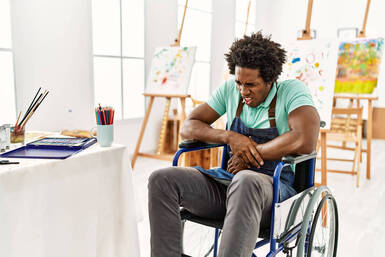 From the Anxiety and Depression Association of America, “Researchers have identified a powerful connection between the gut and the brain. Like the brain, the gut is full of nerves. It contains the largest area of nerves outside the brain with the digestive tract and the brain sharing many of the same nerve connections.” This article continues to explore the impact of emotions on the stomach and digestion, including long-term conditions and diseases. We know creative people have powerful emotions, and that emotions are expressed in the body. It follows, then, that the expression of these emotions often impact the stomachs of creative people. This is why I regularly reverse engineer my search by looking for powerful emotional expression by asking about chronic stomach aches. Conclusions about Headaches and Stomach Aches in Creative PeopleUnderstanding your body and its rhythms is a vital part of caring for your Creative Personality well. When you learn the links between your Creative Personality and the way your body reacts to and experiences life, you feel more empowered to take care of yourself well. Creative Personalities are powerful and manifest themselves in many powerful ways. It is important to educate yourself and learn for yourself how your Creative Personality presents itself in your own life. When you support and nurture yourself well as a Creative Person, you will truly flourish. Learn More About Support for Creative People in Maryland, Virginia, and BeyondIf you are interested in real, impactful, and lasting life change for your creative mind, I would love to help you. Let's connect and launch your life to the next level! I have three steps you can take, right now from my site if you are ready to move forward in your life: 1) Book a Free Consultation. All new clients to Creatively, LLC are entitled to a 15 min, free creativity coaching or counseling consultation to sit with me and discuss your needs, services available, and we can problem solve and hand-pick the best next steps to help you succeed. 2) Begin Counseling for the Modern Day Creative Person. Are you a working Creative in need of specific support? I offer a range of Counseling Services so you can select exactly what you need, and nothing that you don't. Creativity Counseling offers 30 min sessions to 60-minute sessions, as well as asynchronous support. 3) Join my Artists in Residency Program. This is a Free, Online Community of Artists where you can build support, accountability, and a network of Creative People as a stepping stone towards reconnecting and committing to your authentic, creative self. More Articles like Creative People with Headaches and Stomach AchesCreative Translation, Crisis of Meaning: Creative People Lost, Coaching Creative People, A Creative Personality Snapshot, From One Creative to Another, Finding your Creative Balance, Dream Theory for Creative People, Creative People, Mental Health and Creativity (C) 2022 Creatively, LLC www.creativelyllc.com References
Boot N, Nevicka B, Baas M. Creativity in ADHD: Goal-Directed Motivation and Domain Specificity. Journal of Attention Disorders. 2020;24(13):1857-1866. doi:10.1177/1087054717727352 Dorothea Huber Dr, Dr. Phil & Gerhard, (2003) Personality Traits and Stress Sensitivity in Migraine Patients, Behavioral Medicine, 29:1, 4-13, DOI: 10.1080/08964280309596169 https://adaa.org/learn-from-us/from-the-experts/blog-posts/consumer/how-calm-anxious-stomach-brain-gut-connection Hello, Wonderful Creative Minds! Today I want to introduce you to an often encountered, rarely talked about feature of the creative experience, that I affectionately call the “Creation Translation.” This is the critical part of your creative process where your internal experience becomes translated into your external expression. This seemly nuanced, though very real process, is one of the most important, difficult, and unique aspects of your creativity. While it varies artist to artist, and by type of expression, as a part of the creative process, we can generally speak about it in a cohesive way as it functions for Creative People. Creation Translation Works Like A MuscleOne of the first things I tell Creative People about your Creative Translation, or CT for short, is that it functions in many ways like a muscle. Not unlike language, musical, mathematical, or other types of translation, the more you use your CT, the easier it gets, and vice versa. The key, then, is to use it with regularity, to keep your CT flexible and strong. A regularly practiced CT is a key component to the much sought-after “creating with ease.” CT is Important For All Types of Artists and Creative MindsAll types of Creative People use this important creative process, the CT. Different from technical skill and creative perception, CT is a combination of these important features to take what you as an artist experience and present it in a way that is consistent with that, for others to share in that experience. This is an important way in which we use art to communicate! Needs Use and Practice by Creative PeopleYour CT needs regular use and practice to flourish. This is simply true. You may know the feeling of frustration and growth upon learning and building a new skill, or training and expanding a new set of muscles, and building and training your CT with use is not much different than that. You are keeping a part of your mind and creative process in good shape that will support your creative and mental health in a sustainable way. Creation Translation Flourishes With Use, Atrophies With DisuseWhile your CT flourishes with use, it will similarly atrophy and weaken with disuse. This emphasizes the importance of commitment to the regular practice of your creativity, translating your concepts into expression. Akin to “flow” described in creativity research, CT allows you to be more productive. From the perspective of a painter, imagine looking back and forth from your subject, to your canvas, and that good feeling of flow, back and forth, from seeing, to paint stroke, where the image you are creating comes to life on the canvas. You are translating the real-life image, through your own creative filters, brain, techniques, and inclinations, through the brush and onto the canvas, where it comes to life as your own interpretation. This ease or flow-like state is the combination of your artistic skill and your creative ideas combined, recreating your vision. Inability to Start a New Project With Disuse You are a writer, and ready to start your new book. You look at the flashing cursor on your blank screen and feel stuck. You have a concept, you have researched it, and you have a creative voice and perspective from which you write but somehow you don’t know how to begin. It is the lack of use and regular practice of your CT that is feeling stuck and blocked, keeping you from your first keystrokes, to begin your new work. Without regular creative practice, exercising the translation of a concept to creative execution, this difficult task becomes rusty and increasingly difficult to engage with. It is one of the main reasons my artists struggle to maintain a regular creative practice in the first place! How Regular Creative Practice Can Help Creative PeopleOften, I talk about the dichotomous nature of things, especially in creative concepts. One of these dichotomies is between process and product. They are ever at odds with each other, and the more you focus on one, the further you get from the other, creating a lovely tension and balance. It is important to remember that CT is a PROCESS-oriented concept, not a PRODUCT-oriented concept. In other words, consistent creative practice keeps your CT running smoothly, and, especially in the beginning of establishing a creative practice, you must not invest in your creative product in order to allow your CT to build and grow strong. Over time, the regular use of your CT in an ongoing creative practice will produce the ease and flow you seek, generating a more consistent, authentic product reflective of your sensibility as an artist. How Regular Use of Creation Translation is Good for Your Worldview, Self-Esteem, and Mental Health as a Creative Person From a mental health perspective, regular creative practice is the most healthy thing a creative person can do for their mental health. This is something I have researched myself, and build much of my Creativity Counseling and Creativity Coaching principles upon. One of the reasons a regular creative practice is so important is because of the maintenance of your CT. A creative with a well-maintained CT tends to have healthy self-esteem, a clear sense of meaningfulness, perspective, and a sense of purpose in the world. In traditional cognitive therapy, we see concepts and research that reinforce these principles, such as Beck’s Cognitive Triad, that mood states impact thoughts that impact self-esteem. Learn More About Your Creative Personality, and Build a Regular Creative PracticeIf you are interested in real, impactful, and lasting life change for your creative mind, I would love to help you. Let's connect and launch your life to the next level! I have three steps you can take, right now from my site if you are ready to move forward in your life: 1) Book a Free Consultation. All new clients to Creatively, LLC are entitled to a 15 min, free creativity coaching or counseling consultation to sit with me and discuss your needs, services available, and we can problem solve and hand-pick the best next steps to help you succeed. 2) Begin Counseling for the Modern Day Creative Person. Are you a working Creative in need of specific support? I offer a range of Counseling Services so you can select exactly what you need, and nothing that you don't. Creativity Counseling offers 30 min sessions to 60-minute sessions, as well as asynchronous support. 3) Join my Artists in Residency Program. This is a Free, Online Community of Artists where you can build support, accountability, and a network of Creative People as a stepping stone towards reconnecting and committing to your authentic, creative self. Other Articles like, “Creation Translation”Crisis of Meaning: Creative People Lost, Coaching Creative People, A Creative Personality Snapshot, From One Creative to Another, Finding your Creative Balance, Dream Theory for Creative People, Launch Creatively Into Spring, Creative People, Mental Health and Creativity (C) 2022 Creatively, LLC
www.creativelyllc.com One of the most frequent ailments I hear from my creative clients is a sense of meaninglessness. With the world in constant crisis, our life purpose is regularly called in for inspection, how we are living each day end existing in sharp contrast to terrors all around us. How motivated do we feel to sit for another day at our office jobs, when the pandemic rages on? How thrilled do we feel to answer more emails when sociopolitical issues abound? Justifying these stark contrasts in our creative minds becomes increasingly difficult, and the disparity makes us ever more unfulfilled, numbly living our lives feeling empty. The Effect of the Pandemic on Creative PeopleSince the beginning of the pandemic, the world has exploded with ever more hugely important issues, critically demanding problems, and terrifying tragedies. While a normal initial response for many of us was a sense of shock and self-preservation, after years of this, we begin to go into a state of what is known in the science of anxiety of carrying an allostatic load. This means our bodies’ systems of homeostasis become out of balance backlogged, and unable to anticipate our needs. In fact, we are carrying past biophysioloigical demands of trauma preventing us from investing in properly preparing for whatever comes our way in the future. We are maladjusted and living in a constant state of anxious arousal. How do Creative People Adapt?We know from science that has studied anxiety, that organisms living with an allostatic load suffer from symptoms of anxiety, depression, numbness, fatigue, and more. We default to survival and basic functioning. We go about the motions, just trying to emotionally and physically survive each day. Our body is waiting for relief from exposure to stress, to recalibrate and recover. The difficulty is, that respite has not come. Many of us have stopped asking when and if it will, and are readjusting to living amidst a new threshold of difficulty, which is emotionally very adaptive. Creative People Are Trying to Find BalanceAs we begin to recalibrate our bodies to live in a world with ever more challenges, ever more fights, ever more fears, and readjust our allostasis to these conditions, the natural next step is existential and sociological. What previously seemed fulfilling and satisfying, is now out of balance as well. Relationships, activities, routines, and more now carry less meaning and/or feel out of balance with what we have accepted as the “new normal.” Feeling Lost in a War-Torn WorldWe are seeing signs of this in our society already, in different ways. Across the globe, war-torn countries are forced to make life-altering changes in behavior and perspective. Observers in the US suffer violence and other threats, consider the tragedies far away and no longer are satisfied with complacency and drudgery. Suddenly life, because of these events, feels more precious, demands more attention, and different choices. The Great Resignation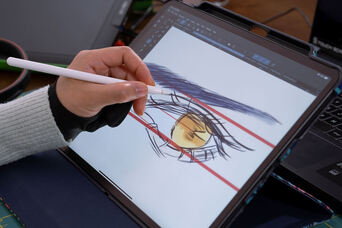 The great resignation continues in the United States as many deem their personal needs more important than the needs of their employer for the first time in their lives. Inspired to make meaning of their lives, and make lasting changes around them, many make brave and scary employment changes, along with many other leaps to pursue their authenticity and happiness. Creative People Need to Prioritize Their Mental HealthThis is a very important time for Creative People. We know that Creative People have specific personalities with specific needs and strengths. More and more humans are understanding the priority of their mental health, and with that, the paramount nature of knowing and caring for their needs properly. Creative People Are the FutureI believe that Creative People are the future that this world needs. They envision the beauty that we need to get unstuck and move forward. There was never a more important time to know and care for yourself well as a Creative Person. That is why I am so passionate about this work. Hold Your Creativity SacredYou may have believed in the past that you should abandon your creativity, for the pursuit of something more practical, sensical, or mainstream. In fact, the healthiest, best thing you can do for yourself as a Creative Person, is to be creative. I want to help you rewrite this core belief, and understand and commit to why it matters, so that you can live better. 3 Ways to Get Healthy, and Creative, Today: 1) Book a Free Consultation. All new clients to Creatively, LLC are entitled to a 15 min, free consultation to sit with me and discuss your needs, services available, and we can problem solve and hand-pick the best next steps to help you succeed. 2) Begin Counseling for the Modern Day Creative Person. Are you a working Creative in need of specific support? I offer a range of Counseling Services so you can select exactly what you need, and nothing that you don't. Creativity Counseling offers 30 min sessions to 60-minute sessions, as well as asynchronous support. 3) Book a Coaching Package. Are you a working Creative in need of specific support? I offer a range of Coaching Packages from 150$. Let's get started with one that is right for you. More Articles Like “Crisis of Meaning”Coaching Creative People, A Creative Personality Snapshot, From One Creative to Another, Finding your Creative Balance, Dream Theory for Creative People, Launch Creatively Into Spring, Creative People, Mental Health and Creativity (C) 2022 Creatively, LLC
www.creativelyllc.com Just like the demands you face every day, mental health needs have evolved. Counseling and Coaching for Creative People has changed to meet the needs of your modern Creative Life. Featuring shorter session lengths, and check-ins between sessions, Elevated Creativity Counseling and Creativity Coaching is here! 14 Benefits of Modern Coaching for Creative PeopleThere are so many benefits to this new, modern style of coaching for creative people. As a creativity coach and counselor for creatives, I am always looking for innovative ways to connect. Reach out for a free coaching or counseling consultation if you are interested in learning more and exploring our potential best fit for working together. 1. Shorter Live Coaching Session LengthsIt can be hard to find a full hour in your life for an appointment. And- working hard for a full hour of coaching and counseling is very demanding! Have you ever tried a 30-minute coaching or counseling session? They are much easier to fit into your day, and you can accomplish and expend just the right amount of mental and emotional energy. 2. Check-Ins Between Live Coaching SessionsTrying to fit everything you need to work on into your compact live session is challenging- most of us remember more details, issues, and insights in between. Modern-day counseling and coaching include these moments of insight with check-ins with me in between your scheduled live appointment time. 3. Neurodivergent Inclusive Coaching for Creative People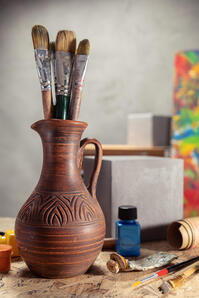 Traditional counseling and coaching, in a live didactic format, is very demanding and taxing on your executive functioning. It depends upon mental clarity, calm, focus, lack of distractions, and the ability to gain insight mainly in this format. I know there is diversity amongst Creative Personalities. Modern-day counseling and coaching for Creative People include email threads you can go back to, asynchronous support you can use at any time of day and night, and shorter live session times to guide your work. 4. Coaching That is Burnout SensitiveYou have just worked all day. You have used most of your psychological capacity trying to earn money, build relationships, solve problems, and otherwise survive. The demand for self-improvement through coaching and counseling when you are already maxed out is a significant barrier for many. Shorter sessions, with check-ins on your time in between give you greater flexibility and less time in appointments. 5. Creativity Coaching is Great for TravelCreative People often find themselves on the road. Whether you are a traveling musician, working between galleries, on the road for inspo, making connections, or otherwise beholden to an inconsistent or fluid schedule, shorter virtual sessions and asynchronous check-ins work on your time. 6. Work Break Compatible Coaching Out of steam when you get home from a long work day? Lunch break can be a much better time to fit in appointments. Yet, traditional 60-minute coaching and counseling sessions don’t leave you enough time for this option. A compact, 30-minute session, is the right length to focus on yourself in more ways than one! 7. Creative, Introvert-Friendly CoachingCounseling and coaching is personal, and it can be hard talking to a stranger about your life. Breaking down barriers such as the traditional “60-minute office setting” makes it easier for introverts to work in counseling and coaching. Start your counseling and coaching journey from the comfort of your own surroundings, with shorter live sessions, and send your thoughts electronically. More comfort, less pressure. 8. Budget-Conscious CoachingPay only for the sessions you need, and use only the time that you need. Don’t get stuck in the traditional rut of paying for 60 minutes when 30 will do. If you need more time, book your next session for longer. No extra sessions, time, or fluff. 9. Time-Saving Coaching for CreativesCreative People are busy people, and time is your most precious resource! While an hour of time weekly may feel daunting, the flexibility of 30-minute live sessions along with asynchronous check-ins may be just what you need for your busy life. 10. Targeted Coaching for Creative PeopleSpecifically created for Creative Personalities, this is expert knowledge and care that will help you thrive, and make meaningful changes 11. Goal Tracking: Part of Your Creativity CoachingWhen you use asynchronous sessions, you have a record of your work you can go back to, anytime 12. Use Your Creativity Coaching AnytimeHaving 3 am thoughts? Use your asynchronous support. Ready for a quick productive session? 30 minutes of a targeted virtual session over lunch is perfect for that! 13. Coaching for Creative People, AnywhereAnywhere you have a device with connectivity, a camera, and a microphone, you can have a session. 14. Asynchronous Coaching Supports Your Creative NeedsSend your thoughts, homework, progress, questions, and updates in between live sessions. Get Started with Creativity Coaching Services Today1) Book a Free Consult. All new clients to Creatively, LLC are entitled to a 15 min, free consultation to sit with me and discuss your needs, the services available, and we can problem solve and hand-pick the best next steps to help you succeed. 2) Book a 30 min/ asynchronous check-in coaching package. Are ready for change and in need of support? The Intro Creativity Coaching Package may be exactly what you need, and nothing that you don't. The Intro Creativity Coaching Package offers 30 min sessions, as well as asynchronous support. 3) Join my community of Artists. This is a Free, Online Community of Artists where you can build support, accountability, and a network of Creative People as a stepping stone towards reconnecting and committing to your authentic, creative self. More Articles Like "Coaching for Creative People" |
get more from The Creativity CoursesLiking educational topics and knowing what's hot in creativity? Creatively has online courses, with an interactive creative community, coaching sessions and more in the Creativity Courses. Want these blogposts in a newsletter? Subscribe here, and get a free gift. Cindy Cisnerosis a Creativity Coach, Creative Therapist and Professional Artist in Sykesville, Maryland. She is an expert straddling the realms of arts, creativity research, psychology, therapy, and coaching. She provides Online Creativity Counseling in Maryland and Virginia, and Online Creativity Coaching throughout the USA, Canada and the UK tailored for the discerning, imaginative, artistic, and neurodiverse. The information provided in this blog is from my own clinical experiences and training. It is intended to supplement your clinical care. Never make major life changes before consulting with your treatment team. If you are unsure of your safety or wellbeing, do not hesitate to get help immediately.
Archives
April 2024
|
|
Concierge Therapy for Creatives in Maryland
Creativity Coaching Worldwide including the USA, UK and Canada |
Telephone |
|

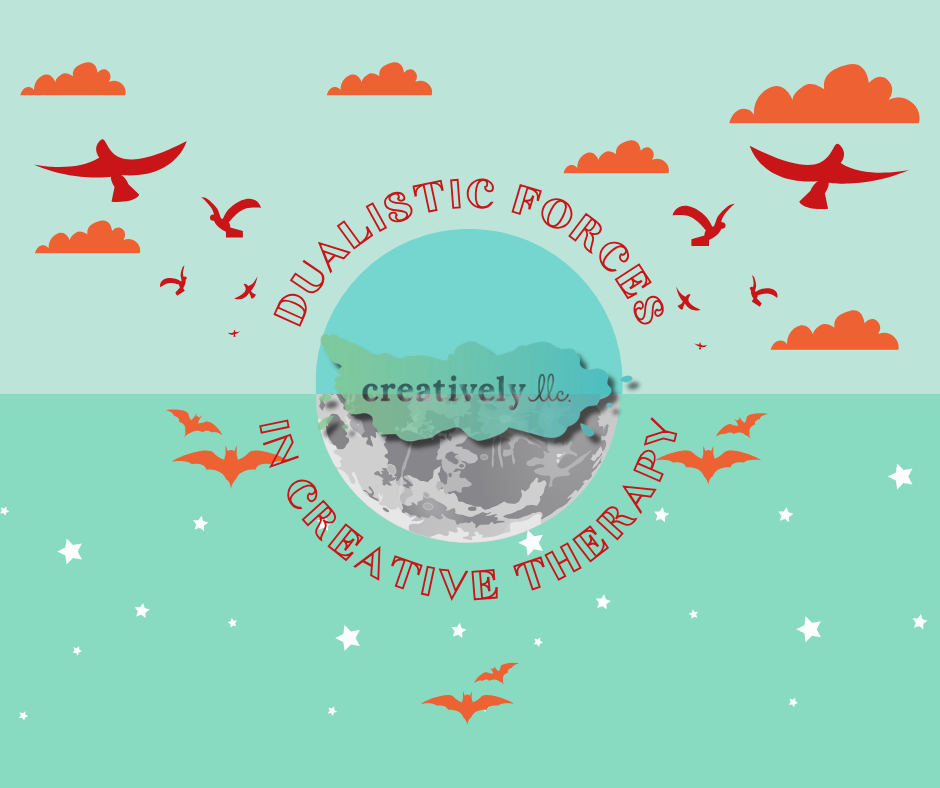
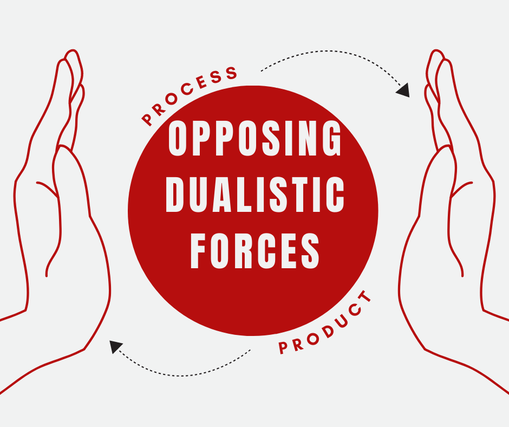
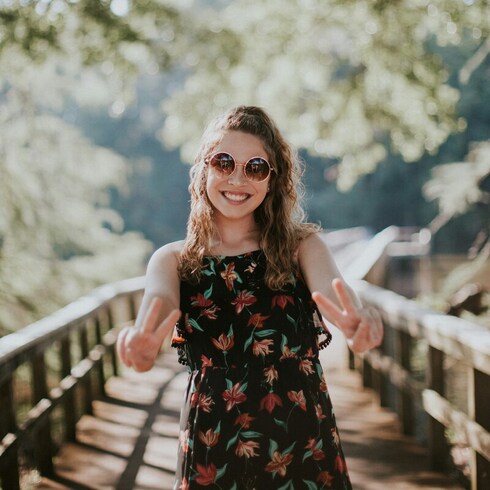
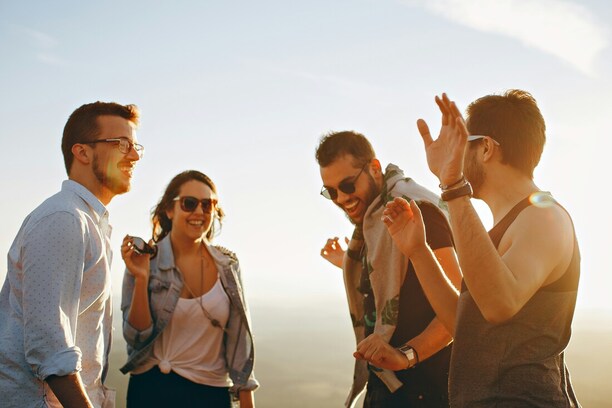
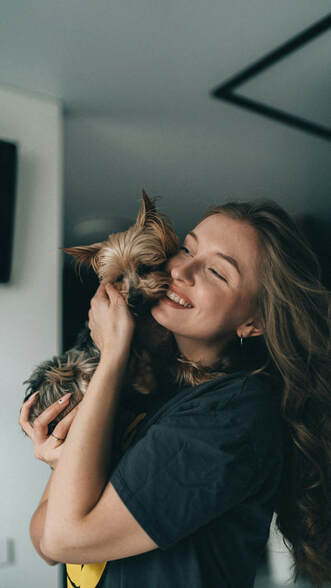
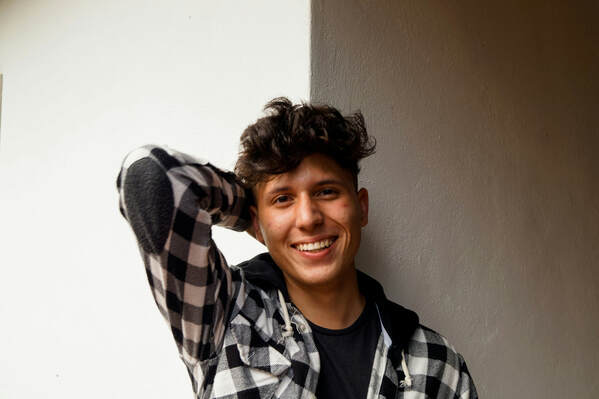
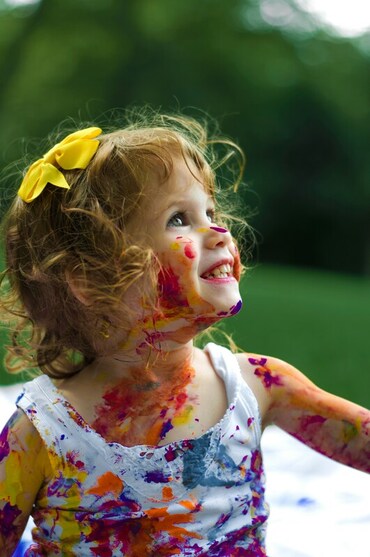

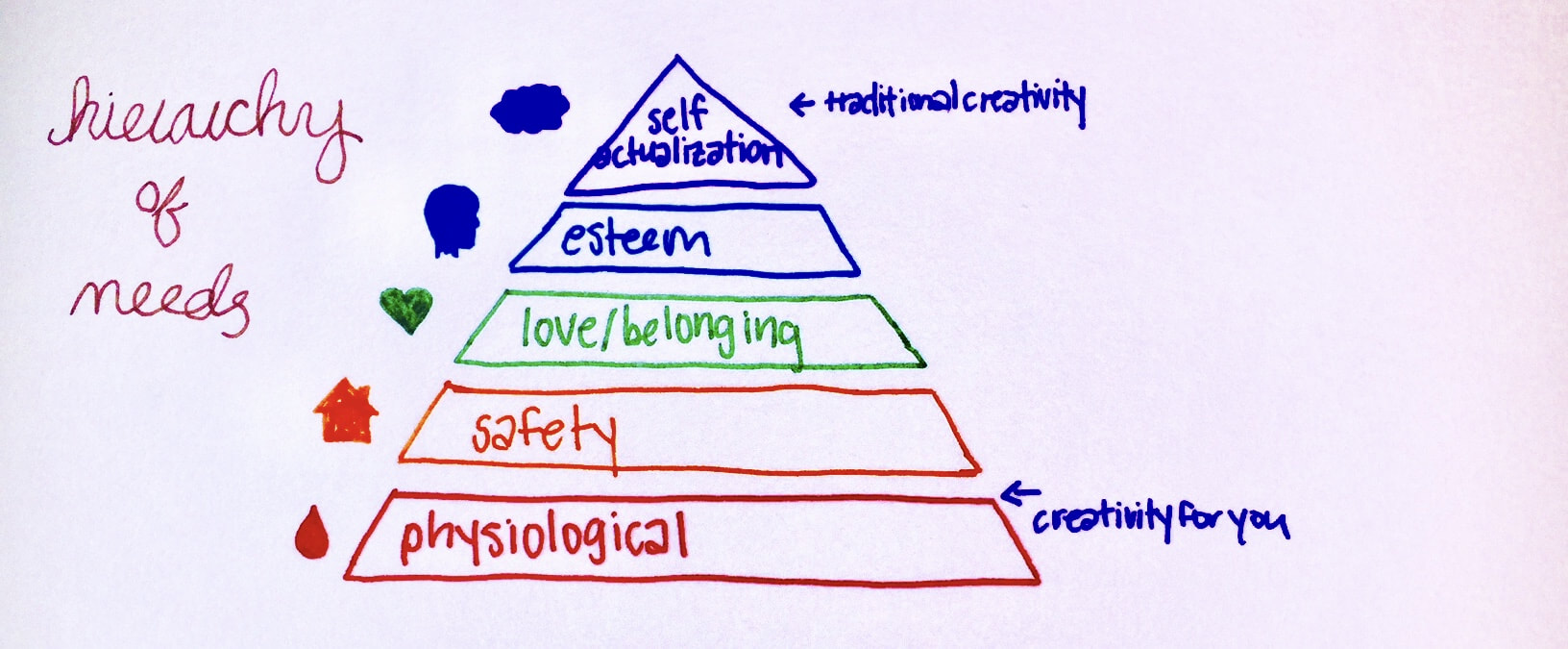

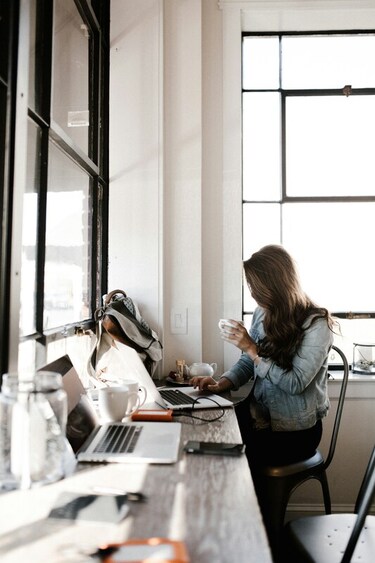
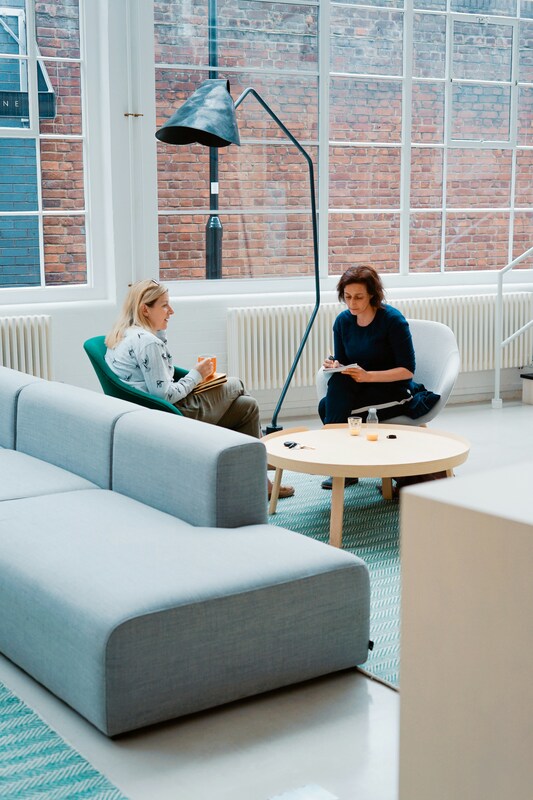

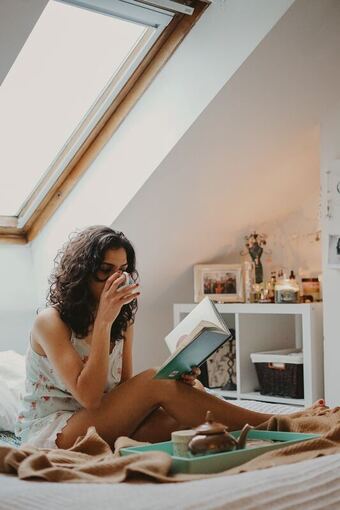
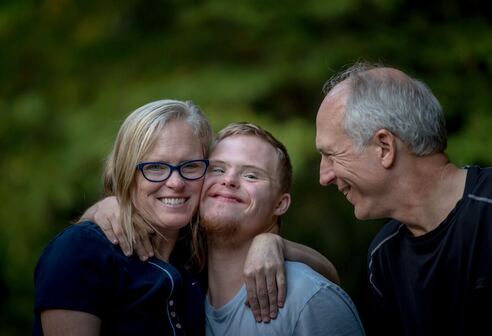
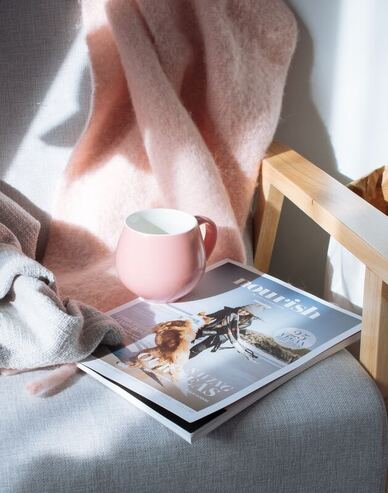
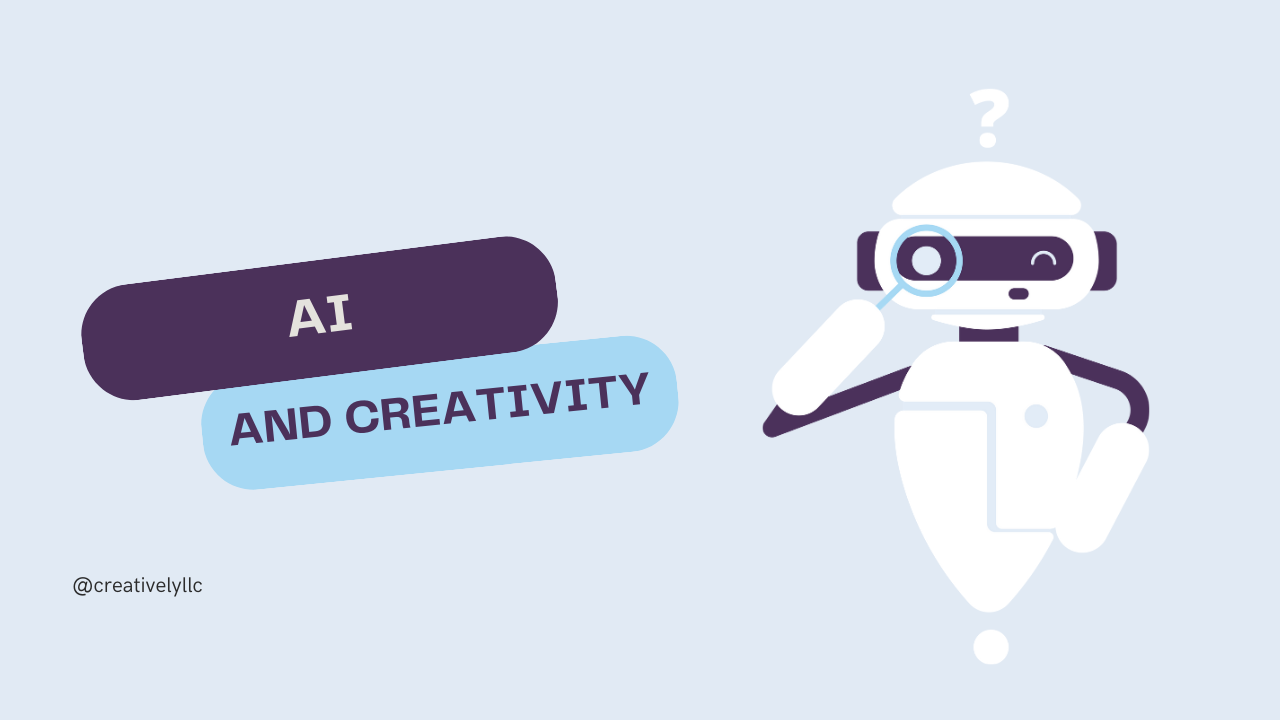

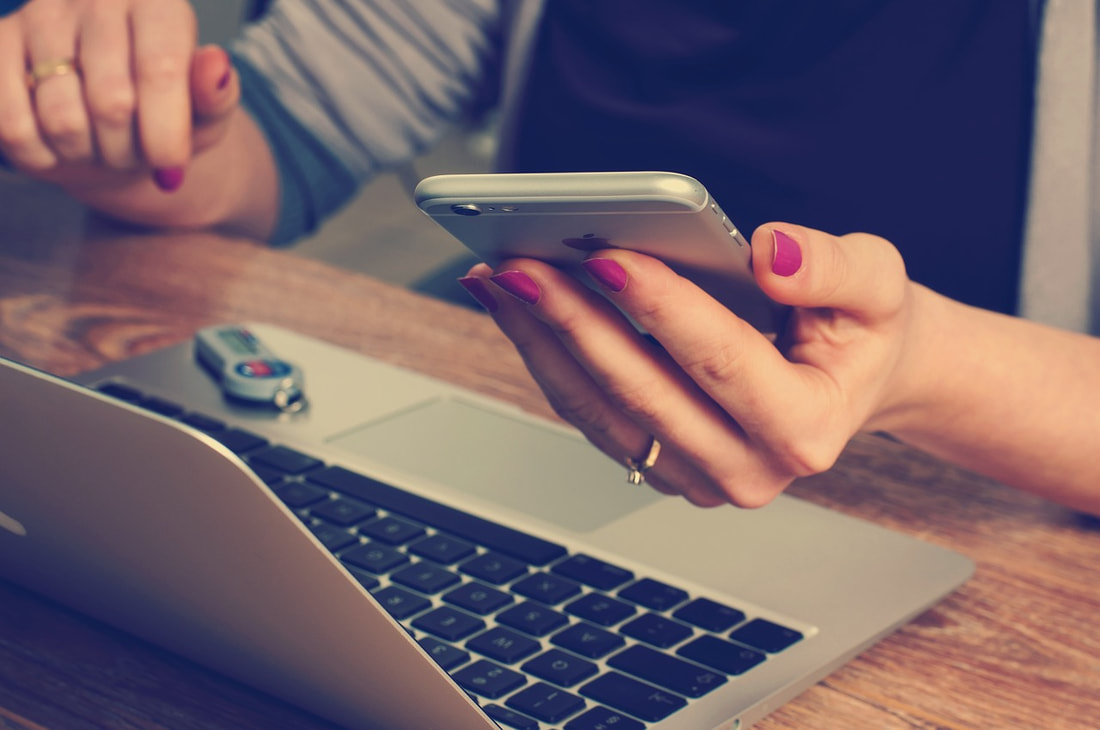
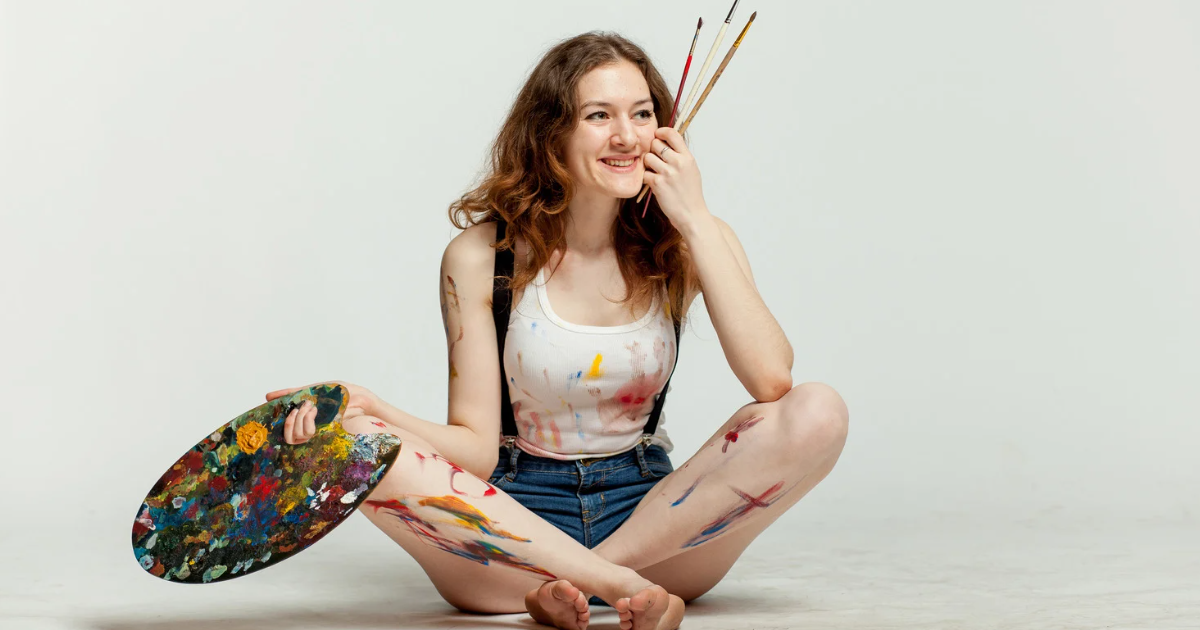
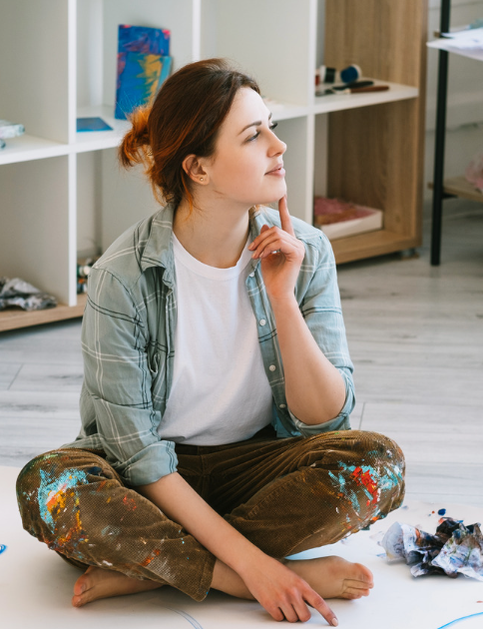
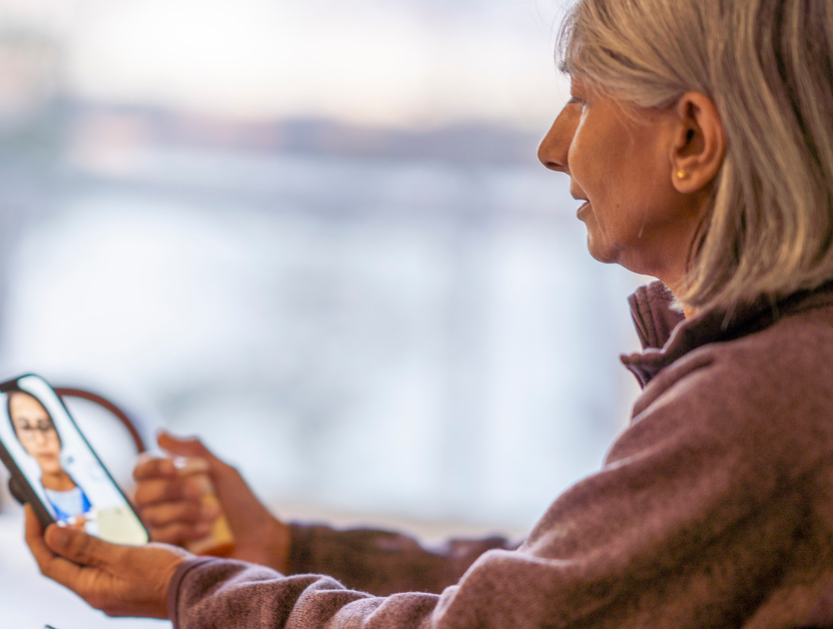

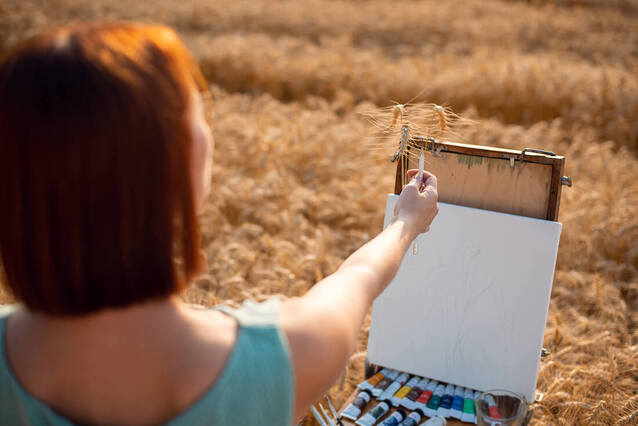
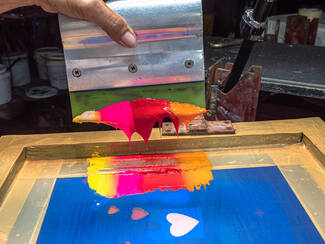


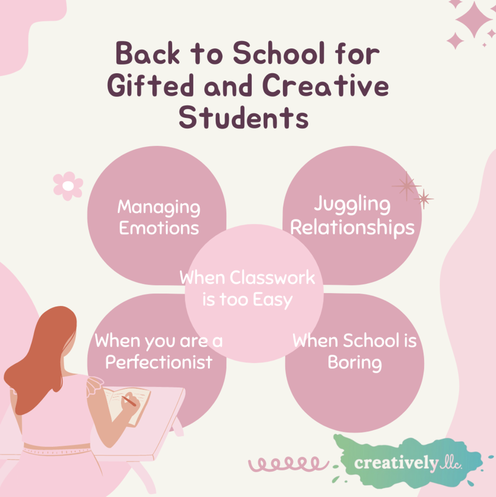
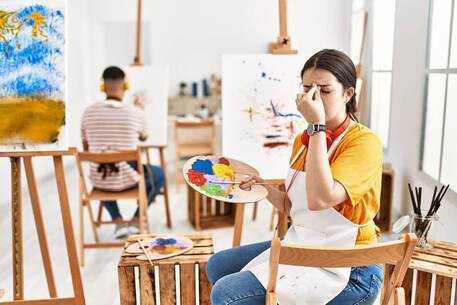

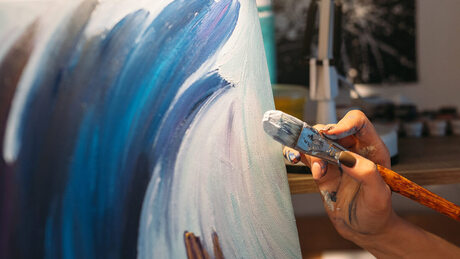
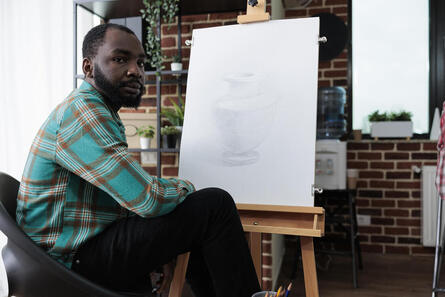

 RSS Feed
RSS Feed
